- Account Settings
- Bird Breeds
- Fish Breeds
- Horse Breeds
- Rabbit Breeds
- Turtle Breeds
- Dog Insurance
- Tips and Advice
- Dog Products
- Cat Products
- Fish Products

Top stories

- Dog Care & Services
The Home Visit: An Essential Part Of Adopting A Dog

“Hello! I am here for your home visit!” If you’re adopting a dog, you might be greeted by these words from a stranger at your door. Not to worry, he’s not here to sell you anything – this is a home visit and it’s an increasingly common part of pet rescues adoption procedure.
In fact, I may end up on your door step because I do home visits for a local dog rescue. This is my favorite part of volunteering. I love to meet people and feel so special to be part of the final step in a dog’s journey to finding a new home.
Related: Adventures In Fostering: Meet Francis
I understand that people may be nervous about a home visit. Relax – I’m not there to judge your home décor color scheme (but since we’re on the subject… do you think that flashing beer sign goes with the couch?) or make sure you’ve dusted everything with a flat surface. This home visit is to ensure that this adoption is going to be successful. The best way to do this is by having an in-house conversation, as well as a pair of trained eyes that will help you eliminate any potential problems around your house and yard.
Related: A Day In The Life Of Dog Foster Dad
I’ll want to know if you have a vet you’re using. It’s best to have a vet set up before you bring your dog home, rather than rushing to find one in case of an emergency.
Have you ever taken an obedience classes before, and what activities you are looking to do with your dog? What’s your daily routine and how you will include the dog in this? This includes where the dog will eat, sleep, be trained and exercised.
I’m not here to tell you how to do it; I am here to get you to think about it. Some families have a bed already in place and bowls out for meal time. Others are looking for guidance, and we will discuss options and possibilities that will work for you.
What am I looking for?
In general, I am looking to see that the home is safe for the dog. If you have a fenced yard, I will inspect it with fresh eyes for any possible escape routes. Maybe your gate is sagging, or you have a stack of firewood piled against the back corner, which a dog might use as a ladder and escape the yard. These are easy fixes, and it’s my job to point them out to you.
I also look for potential hazards to your new dog. Many dogs just love to eat from the cat litter box, or get confused by kid’s toys vs. dog’s toys. I check to see that household cleaning supplies are stored away safety – products such as laundry soap can be harmful to dogs if ingested.
Most of the homes I visit, the humans have to work outside of the home. Hey, someone has to bring home the bacon for chew toys and food. I understand! I am also looking to see where the dog will be spending time when his owners are out of the house.
When a shelter takes on the commitment of a dog, it’s a huge responsibility. Finding it the right fit for a forever home is part of that responsibility. The home visit is intended to support the adoptive family and to ensure that this will be the right match. Be open with me; ask me whatever questions you want. I’m here to make sure that everyone is happy, and that you and your new dog live happily ever after!

Kevin Roberts lives for adventure. Together with his pack of rescue dogs and his husband, he spends as much time outdoors as possible. Kevin lives by the motto: "Get outside and play with your dogs!
More by Kevin Roberts

Dog Siblings Reunited After 13 Years Apart Thanks to a DNA Test

Cat Learns to Turn on the Sink Faucet, Causing Cat-astrophic Flood
Related articles.

6 Mistakes to Avoid When Adopting a Dog
You’ve decided to adopt a dog – that’s awesome! Before you rescue a pooch, watch out of these common adoption mistakes. When you adopt a new dog, you could very well be saving a life – literally. No matter where he comes from, bringing home a new dog can be incredibly exciting but there are also some challenges you are likely to encounter. To make sure that you and your adopted friend adjust to your new lives together, avoid these top six mistakes. Rushing into it. When you visit a dog shelter it is easy to be overwhelmed by all of those sad, puppy dog eyes staring at you through the bars. At that moment, it is hard to believe that bringing home one of those needy dogs could be anything less than amazing, but it is a big decision that you should consider carefully before making. Think about whether you are really ready to get a dog and if you have the space, the time, and the money to devote to caring for him for the rest of his life. Related: The Home Visit: An Essential Part Of Adopting A Dog Going only for puppies. There is nothing more adorable than a puppy, that is for sure. But bringing home a new puppy is a major commitment of time and effort – you’ll need to housebreak him, socialize him, and train him, plus you’ll have to deal with puppy problems like chewing and having accidents in the house. Think about bringing home an adult or senior dog who may already be housebroken and trained and who is just as deserving of a home.Not getting to know the dog. The shelter environment can be very scary and stressful for dogs, so the way a dog acts at the shelter may not be the way he acts at home. Do not assume that just because a dog is calm and quiet at the shelter that he will stay that way once he settles in at home. Considering fostering the dog for a week to get to know his personality before you commit, just to make sure that it is the right situation for all involved. Related: Shelter Dogs Strike a Vogue Pose For Their Adoption Profiles Assuming mixed breeds are the only option. Animal shelters around the country are overrun with mixed breed dogs, especially of the Pitbull type. But that doesn’t mean that you can’t find a purebred at a shelter. Dogs are abandoned for all kinds of reasons and if you have a particular breed in mind, give the shelter your name and contact information so they can get ahold of you if one comes in.Thinking it’s going to be easy. Bringing home a new dog is always going to be a challenge. Whether you are adopting a puppy or an older dog, it will take time for your new friend to adjust to his new home life and the two of you may go through some growing pains when it comes to your relationship. Be sure to give your new friend plenty of love but respect his need for space and quiet time if he is having a hard time making the adjustment.Not going to the vet. In many cases, dogs are turned over to the shelter with minimal background information – when you adopt a dog you won’t always know his history. Even though the shelter will give the dog an exam before adopting him out, you should still have him seen by your own veterinarian shortly after bringing him home and then you need to keep up with regular vet visits. There is nothing more noble than giving an abandoned dog a new home, but adopting a dog is not always easy. There are certain challenges involved and you are going to make mistakes. But learning about the most common mistakes adopters make can help you to avoid them.

What is the Best Dog Harness for Senior Dogs?
Final Thoughts – The Best Harness for Senior Dogs Many veterinarians and experts on the health and care of senior dogs will recommend using a harness. However, not all harnesses are created to meet the needs of every life stage. When selecting a harness for an older dog, there are unique factors to consider. This includes the weight and bulkiness of the harness, how easy it is to put it on/take it off, and the padding inside the harness for their comfort. Pay careful attention to ensure the design or fit doesn’t limit or impact movement. There are many great harness options on the market, including those made for regular wear and specialized lift support harnesses with convenient shoulder straps. If possible, visit your local pet store with your senior dog to check out your options firsthand. This will help you better assess the size needed and whether the design suits your dog’s unique needs. Most importantly, remember that there is no “one-size-fits-all” solution. You may find that you are using two different harnesses with two senior dogs in your home. That’s okay! The goal is to find the option that supports all your dog’s needs and helps you give them the best possible quality of life. Join the PetGuide community. Get the latest pet news and product recommendations by subscribing to our newsletter here.

Does My Dog Need Winter Boots?
The days are growing colder and colder, and your pet is more and more hesitant when it’s time to go out for a potty break – who could blame them? It’s not like we owners don’t need to give ourselves a pep talk when it’s time to take our dogs out for a walk when it’s snowing outside or the icy wind is whipping everything in sight.While winter can be very unpleasant for your dog, there are ways to keep your pooch toasty and more comfortable when the temperatures drop, ranging from cozy winter coats, warm blankets, and protective winter boots. Yes, those cute little booties are more than a fashion statement – if you’ve been questioning their efficacy, read on to find out if your pet could use a pair of nice winter boots to keep their paws snug and warm.Does My Dog Need Winter Boots?You might think that paws are naturally protected from the cold ground and rough terrain thanks to their unique properties, but that’s only partially true. Not all doggos are built the same. As they come in different shapes and sizes, and with different coat lengths, it means that they will experience winter and cold temperatures in different ways. But even so, no dog’s paw should be left to endure the snow, the ice, and the rock salt on the asphalt streets. That means that dog boots in winter are far more than a simple piece of the outfit. They protect, keep warm, and ensure that your dog’s paws are safe from injuries, irritations, and dangerous substances. Of course, some dogs need winter boots more than others. Small and toy dogs are much more vulnerable to cold and low temperatures, and they will need protection from the elements without a doubt – that means both a winter jacket and boots. The same goes for senior dogs, whose aching joints and paw pads are much more vulnerable to the elements than they were when they were young.Ultimately, however, dogs of all ages and sizes should be accustomed to wearing dog boots. They protect your pet’s paws in any weather, and come with a range of other advantages, too – these are the main five benefits of dog boots:#1 TractionThanks to dog boots, your pet will no longer have trouble walking on icy or slick surfaces. Boots provide grip and traction, and your next wintery outing will be much safer and faster thanks to them. This is especially important to seniors, who can seriously injure themselves and endanger their mobility due to slips and falls on icy surfaces.#2 InsulationThe boots are there to protect from extreme temperatures. This goes for both winter and summer. So whether it’s ice and cold, or the hot summer asphalt, the boots are there to provide safety – no frostbite on the paw pads, no burns on their delicate little beans.#3 HygieneCleaning your dog’s paws after every walk can quickly become a tiring chore – kudos to you if it doesn’t. Winter brings mud and slush with it, and without the boots, all that mess remains on the paws and gets inside your house, so you need to clean your pet’s paws every single time you come in from outside. `thanks to dog boots, this can be a thing of the past.#4 Comfort and careDogs can have very sensitive paw pads, especially if they are older and cracked. Thanks to dog boots, winter doesn’t have to exacerbate these issues. Padded and comfy, dog boots ensure that walking on various surfaces is smooth and pain-free.#5 Prevention of injuriesWhen it comes to the protection of paw pads, nothing beats dog boots. In winter, there are a lot of hazards on the walking surface. Ice shards, frozen rocks, icy puddles, and rock salt – the list is endless. Thanks to the protection of the boots, your pet will be safe from abrasions, cuts, and frostbite.

Is Aquarium Salt Safe for Plants?
All those in love with the fascinating world of aquatics know how sensitive and (sometimes) demanding pet fish and aquarium plants are. The aquarium plant life in particular can be very vulnerable, reacting to the smallest changes in the tank’s environment. Naturally, this begs the question: could adding salt to your tank potentially kill its plant life? Or is salt beneficial for your aquarium’s flora? These are the questions that need to be answered carefully, as there are different types of salt used, and not all have the same effects on the many different aquarium plants. Let’s dive deeper into the topic!Is Aquarium Salt Safe for Plants? Aquarium salt, when used properly, has many uses in an aquarium setting. It can help with certain issues like treating fish diseases and promoting electrolyte balance in fish. But what about plants? The key to using salt with aquarium plants is moderation and research. There are different types of salt on the market, so you should inquire about their properties and possible effects on fish and plants. Secondly, always use it in moderation. When used in the right amounts, salt can be beneficial. However, the excessive use of salt can be harmful to plants, as it can disrupt their osmotic balance and lead to dehydration or nutrient imbalances. In fact, put too much of it, and you can kill all the plants AND the fish in the tank!But what is the osmotic balance? Like all living organisms, plants maintain a delicate balance of water and salts within their cells. When exposed to high concentrations of salt, such as those found in aquarium salt products, plants can experience “osmotic stress”. This stress occurs because the salt outside the plant's roots creates a higher concentration of solutes in the soil than inside the plant cells. As a result, water is drawn out of the plant, leading to dehydration and potential damage – and even death.Excessive salt in the aquarium soil can also interfere with a plant's ability to absorb essential nutrients. Sodium ions, which are a component of salt, can compete with other positively charged ions like potassium, calcium, and magnesium that plants need for healthy growth. This competition can disrupt nutrient uptake and lead to deficiencies, even if those nutrients are present in the soil.Another confusing factor is that some aquarium plants are much more tolerant than others. Halophytes, for example, are plants that have evolved to thrive in saline environments and can withstand higher levels of salt in the soil and water. However, most freshwater aquarium plants are not adapted to high-salt conditions and can suffer greatly when aquarium salt is introduced to the tank. You should also consider the types of salt available. Sea salt, for example, is much different and more complex than ordinary table salt. It contains sodium chloride, and minerals like potassium, zinc, and calcium. As such, it is only suitable for use in aquariums that have marine fish and invertebrates, and plants naturally occurring in salt waters.

Scientists Finally Identify Mystery Dog Illness Sweeping America
If you are a dog owner in the United States, you have likely already seen the news reports about the mystery illness responsible for the deaths of several dogs, prompting veterinary professionals to caution pet parents about taking their pets out to public spaces. But we may finally be able to spot the light at the end of the tunnel… Dr. David Needle, pathology section chief at the College of Life Sciences and Agriculture at the University of New Hampshire, reported that scientists have finally identified the cause of the illness. While this doesn’t mean that life for our dogs can return to normal immediately, it does mean that they are one step closer to finding a cure and moving past this nightmare. The research article has yet to be published, but the team is sharing their initial findings to provide hope for pet parents and the veterinary community. The pathogen responsible for the mystery respiratory illness is described as “a funky bacterium.” “It’s smaller than a normal bacterium in its size and in the size of its genome,” explained Needle. “Long story short, it’s a weird bacterium that can be tough to find and sequence.” Searching for the cause of this illness wasn’t easy for researchers. Initially, there were no known bacterial, viral, or fungal pathogens, meaning they were searching blind. However, after testing 30 samples from New Hampshire, genetic material from an atypical bacterial species was discovered. The next step in understanding the cause of the illness and working towards a cure (and possible preventative) is to compare these findings to samples from dogs in other states to verify that it is, in fact, the same pathogen in all reported instances. States with possible cases of the disease include: CaliforniaColoradoFlorida Georgia IdahoIllinois IndianaMarylandMassachusettsNew HampshireOregonPennsylvania Rhode IslandVermontWashingtonOne challenge faced by veterinarians is the fact there is no test to confirm that all reported cases are, in fact, the same illness. What Are the Warning Signs?Common symptoms resemble respiratory infections like canine influenza and kennel cough, conditions usually seen in higher numbers at this time of year. Luckily for the human members of our family, there are currently no reports of the illness being transferred to humans. Veterinarians recommend watching out for the following symptoms: Coughing or sneezing WheezingDifficulty breathingNasal or eye dischargeDehydration Loss of appetite Weight loss FeverLethargyHow Can You Keep Your Dog Safe? Until a cure has been identified, dog parents are encouraged to focus on preventative measures. Ensure your dog’s vaccinations are current, protecting them against known respiratory problems. Avoid public spaces like dog parks, doggy daycare, and grooming establishments where dogs may be exposed to the illness. If you must go to a public space, steer clear of shared food and water dishes. Your dog will be just as happy to spend this time playing with you as they would with another dog!If you notice any signs of respiratory trouble or illness, don’t panic. Contact your veterinarian to share your concerns and make an appointment.
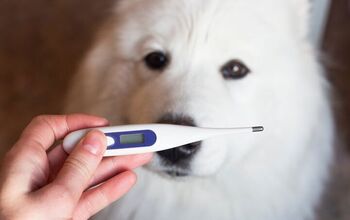
How Can I Tell If My Dog Has a Fever?
High fever is no joke, and can be quite serious – both for people and their furry four-legged friends. Yes, dogs can have a fever too, and it can be a much more serious condition for them than it is for us. Unfortunately, fever is not an ailment you can spot with your bare eye. Because of this, you will need to thoroughly observe your pet’s behavior and learn how to spot those little details that indicate a fever. Read on as we go through the basics of dog fever and just how to tell if your pet needs your help.Symptoms of Fever in DogsDogs, like humans, can develop a fever as a response to illness or infection. It’s the body’s natural way to fight off the “intruders” in the body. Fever comes in many forms and for various reasons. You can tell if your dog has a fever by observing their behavior and checking for physical signs. Here are just a few of the most common indicators.Increased Body Temperature:

Amazon Took Some Heat with 2023 Super Bowl Ad
Rescues and dog experts alike felt solution to separation anxiety was a total fumble. Can they recover this year?

How to Tell Your Cats Are About to Fight, According to Scientists
Have you ever wondered if your cats are play fighting or fighting for real? People living in multi-cat households know that the occasional scuffle or a full-blown cat fight is bound to happen. However, many cat owners have a hard time figuring out whether their cats are fighting or roughhousing. A new study published in Scientific Reports can provide some clues. As it turns out, certain behaviors could indicate whether an interaction between two felines is friendly, aggressive, or something in between. In this study, scientists, including Noema Gajdoš-Kmecová from the University of Veterinary Medicine and Pharmacy in Košice, Slovakia, analyzed 105 videos of interactions between 210 cats. The videos were obtained directly from cat owners and YouTube. After watching around one-third of the videos, Gajdoš-Kmecová pinpointed six types of specific behaviors, including wrestling, chasing, staying still, vocalizing, interactive, and non-interactive activities. She then watched all the videos again to see which cats exhibited one of these specific behaviors and for how long. After running a statistical analysis, Gajdoš-Kmecová was able to identify three distinctive types of interactions between the cat pairs - playful, intermediate, and aggressive. To confirm her findings, other members of the research team also watched the videos and classified each interaction between cats. Over half of the cats from the videos, 56% to be exact, exhibited playful interactions. According to the study, playful interactions included wrestling and a lack of vocalization. About 29% were labeled as agonistic, meaning they exhibited any type of social behavior that included threatening, aggression, and submission. Cats in this group vocalized and exhibited recurring bouts of inactivity.The cats in the intermediate group were involved in both aggressive and playful encounters. According to researchers, this group showed prolonged exchanges of specific behaviors, like laying on the back with the belly exposed, pouncing, stalking, and grooming each other. Scientists believe that this mixture of playful and aggressive behavior may be a sign of short-term friction between the cats rather than the end of the relationship. “This might escalate into a fully agonistic encounter but does not necessarily reflect a breakdown in their social relationship but rather a short-term disagreement in social priorities,” researchers wrote in the study. This study is the first to apply a scientific approach to cat behavior that can be identified by experienced and first-time owners alike. Thanks to this study, scientists can now classify inter-cat interactions as either playful, agonistic, or intermediate. “Wrestling can be a sign of a fight but if it comes with bouts of inactivity then that often means it is playful,” explained Profesor Daniel Mills, who led the study.“Playfighting is also without vocalizations. That’s the profile of a friendly cat. The agonistic cat, they might not do as much wrestling with inactivity but they do lots of vocalization.”“Owners should keep an eye out on how much they are wrestling and whether or not they’re vocalizing. Vocalizing can be broad and include meowing and also yowling,” he added. We all know when cats are fighting fur real, but it’s important to recognize intermediate interactions, where things could end in play or escalate into a real fight. “A lot of cats end up at cat rescue centers because the owners think that they’ve fallen out. In the clinic, I’ve seen cats that are playing and the owner thinks it’s a real fight,” said Professor Mills. If your cats are really getting along (share food and toys and sleep together), an occasional bout of agonistic play is okay. But if your cats aren’t the best of friends, you should look for signs of agonistic behavior. Join the PetGuide community. Get the latest pet news and product recommendations by subscribing to our newsletter here.

Is a Cat Tree Necessary for My Cat?
When you first bring home a new cat, it’s an exciting time – especially if you’re a first-time cat parent. However, amidst the excitement, there are many questions that may be holding you back from fully embracing the joy. Are you prepared to meet all your cat’s needs? Are there “must-have” items you have overlooked? The struggle is real! We have good news… Many of the items that are deemed “necessary” are actually optional. One such item is the traditional cat tree or cat scratcher. Do they offer benefits? Yes! Can they help to improve your cat’s mental and physical health? Yes! But is a cat tree necessary for your cat? No, it’s not. There are other ways you can meet your cat’s needs if your budget or space doesn’t allow for a large piece of cat furniture. Let’s dig into the truth about cat trees and your cat. What is the Point of Cat Trees? If you’re currently standing in your local pet store, looking over the wide assortment of cat furniture available, you may wonder – what exactly is the purpose of cat furniture? Is it just a fancy bed solution for your cat, or are there other considerations when these products are developed? It’s an honest question I often hear from first-time cat parents. After all, these large, elaborate structures often come with a hefty price tag. If they do nothing more than provide a place to sleep, wouldn’t a simple cat bed suffice? Cat furniture is designed to meet many of your cat’s instincts, including their need to scratch, hide, climb, and oversee their surroundings. Each type of cat furniture has its benefits to consider.

AI Could Match You with a New Furry Friend Based on Personality
In a cutting-edge study, scientists specializing in canine behavior have used artificial intelligence to predict dog personality types. A multi-disciplinary research team has developed an AI algorithm that simplifies the painstaking process of evaluating canine personalities.Understanding a dog’s temperament is key not only for pet owners but also for training agencies and professionals working with working dogs. The study, which introduces a brand-new method of predicting and categorizing dog personalities, is published in the eminent journal Scientific Reports. The team that developed the algorithm hopes that it will more quickly and accurately evaluate which dogs are better suited for long-term careers, such as assisting people with disabilities and helping law enforcement. This new approach to predicting dog personalities could also be used to match owners with a new furry best friend. The new AI algorithm can help shelters place dogs in the right homes, thus reducing the number of dogs returned for not being the right fit for their adoptive families.Before this algorithm, canine behavioral experts used questionnaires and statistical analysis to determine a dog’s personality. The AI algorithm uses data from almost 8,000 responses to the commonly used Canine Behavioral Assessment and Research Questionnaire (C-BARQ). The C-BARQ questionnaire has been the top resource for evaluating working dogs in the past two decades. “C-BARQ is highly effective, but many of its questions are also subjective,” said James Serpell, a professor of ethics and animal welfare emeritus at the University of Pennsylvania School of Veterinary Medicine. “By clustering data from thousands of surveys, we can adjust for outlying responses inherent to subjective survey questions in categories such as dog rivalry and stranger-related fear.”The team’s new AI algorithm gathers the responses to C-BARQ questions into five main categories that essentially form the digital personality of a dog. The results showed five distinctive personality types among domestic dogs, including excitable/attached, anxious/fearful, reactive/assertive, aloof/predatory, and calm/agreeable.The study was conducted over two years by a multi-disciplinary research team consisting of Dr Mohammad Amirhosseini of the University of East London and Professor James Serpell of the University of Pennsylvania School of Veterinary Medicine. The research was sponsored by Dogvatar, a Miami, Florida-based canine technology startup.“This innovative AI-based methodology holds promise for revolutionizing the selection and training of dogs for specific roles, both for working and non-working,” said Dr Amirhosseini. Almost 50 percent of people who surrender their dogs to animal shelters in the USA say that behavioral problems are a contributing factor, and nearly a quarter say that those problems are the main reason for giving up their dog. More research is needed to understand the nuances of canine personalities. However, researchers hope to promote strong bonds between people and their dogs by designing effective training programs and customized dog-owner interactions. According to researchers, these findings could serve as a foundation to explore personality matching between dogs and their owners and how that might improve the quality of their relationship.Dogvatar and the research team plan to conduct further research into potential uses for their dog personality testing algorithm.“This has been a really exciting breakthrough for us,” said Dogvatar CEO Piya Pettigrew. “This algorithm could greatly improve efficiency in working dog training and placement process and could help reduce the number of companion dogs brought back to shelters for not being compatible. It’s a win for both dogs and the people they serve.” Join the PetGuide community. Get the latest pet news and product recommendations by subscribing to our newsletter here.

Once-Abused Dog Celebrates First Christmas With Vet Who Saved Him
A puppy who survived a terrible beating has celebrated his ‘first proper’ Christmas with a veterinarian nurse who provided a loving furever home for him.A whippet named Terry was only 12 weeks old when he was viciously attacked by his owner and left with severe trauma injuries after he urinated inside. The injured pup was taken to the Hull PDSA Animal Hospital in East Yorks, England, where he was treated by the veterinary nurse Rachel Coombes. During the initial exam, the hospital’s staff discovered that Terry had a bruised eye and lips. The pup was also missing three of his upper incisors, and another tooth was broken.For nurse Coombes, this was love at first sight! She told her colleagues that if Terry survived, she would adopt him, and that’s exactly what she did.Although Terry celebrated Christmas with Rachel and her son Stanley last year, this year was their ‘first proper’ Christmas together since Terry is now fully settled in with the family.“I just felt a connection as soon as he was brought in as he was in such a state we actually thought initially that he hadn’t made it,” said nurse Rachel according to Talker. “Then when we spotted gentle breathing I did say ‘if he survives this I’m going to give him home’ which is exactly what I did.”From that moment on, Terry’s life changed completely! “He hasn’t looked back since - he loves life and is having the best of life right now.” According to his new owner, Terry likes to run around the garden and enjoys going to the beach. The pooch has also formed a strong bond with Rachel’s son, Stanley, and is always by his side. “Last year, we got him around Christmas, but it was such a hectic time for him, and he was learning to settle then.” But this year, the family planned a festive celebration for Terry and did everything to make him feel special during the holiday season. Due to the suspicious nature of Terry’s injuries, RSPCA Inspector Laura Barber was asked to investigate. The inspector said that despite the severity of his injuries and his overall state, Terry had put his head on her and was so trusting. “He was in such a sad state and was really quiet and withdrawn when he was with people. He was so lovable, and it is great to see he has a home he deserves with such a lovely family.”“I know Terry will have the best first proper Christmas with his lovely new family and one he thoroughly deserves,” the inspector added. Terry’s extensive injuries were enough to build a case against his former owner. After appearing in court and admitting to causing unnecessary suffering to a dog, the person was handed a five-year ban on keeping animals. Emily Lomas, an animal care assistant at RSPCA’s Hull branch, said she was thrilled when she learned that Rachel had adopted Terry. “He was very traumatized and overwhelmed when he came to us, we had to really show him there was nothing to be scared of and that he was now safe. We took him to the socialization room, and I remember him falling asleep on my legs,” said Lomas.“We were all thrilled when he was adopted and knew he was going to a special home,” she added.Join the PetGuide community. Get the latest pet news and product recommendations by subscribing to our newsletter here.

How Can I Reduce My Dog's Environmental Pawprint?
In today’s day and age, with the climate and environment at great risk, we want to do anything we can to minimize our own carbon footprint and the damage we do to Mother Nature. Of course, our pets also have an environmental impact – and eco-conscious pet parents are always on the lookout for simple ways to reduce their pet’s carbon footprint (or pawprint if we’re being precise). Luckily, there are a lot of small but important steps that you can take in order to make your pet’s lifestyle and care much more eco-friendly without compromising the quality of life they are used to. Here's where to start if you want to become a more eco-friendly, sustainable dog owner!5 Ways You Can Reduce Your Dog's Environmental PawprintCaring for your pet can be challenging, and that’s no secret. However, the things that make it easier are not often very good for the environment, and can make your pet’s environmental pawprint significant. Luckily, it does not take too much of a change to turn that completely around and start improving that environmental impact, day by day. What follows are just a few of the basic steps you can take as a caring and responsible owner.#1 Be Responsible About Your Pet’s Waste Disposal:

Dave Bautista Teams Up With the ASPCA for Giving Tuesday
With an estimated 3.1 million dogs entering U.S. animal shelters every year, the need for funding and support is evident. For many, this is a call to action to find ways to make a difference – including for Guardians of the Galaxy actor Dave Bautista. Starting today, November 28th, the American Society for the Prevention of Cruelty to Animals (ASPCA) is launching a new fundraising and awareness campaign with 54 Bautista and his four rescue pit bulls in the spotlight. The campaign was created as part of Giving Tuesday, a global response to the corporate focus of Black Friday (as well as Small Business Saturday and Cyber Monday). Rather than highlighting sales and taking advantage of deals through your favorite stores and brands, Giving Tuesday encourages Americans to take a moment and consider how they can make a difference in the lives of others – including, of course, animals in shelters and rescue organizations. Bautista’s involvement in the campaign is motivated by his experiences with animal rescue and its impact on his life. “My home is where my dogs are because there is just such a sense of love,” Bautista stated. “I feel like wherever they are, there’s this sense of normalcy, which is hard for me to attain these days.” He went on to explain, “My first rescue dogs were Ollie and Maggie, and I’ve had them for about five years. I adopted them, and after becoming so connected with them, I started to be more aware of how many dogs are just waiting for someone to give them good, loving homes. You get so much in return when you adopt a pet, and I’m going to preach adoption for the rest of my life.”

New Survey Ranks America's Top Dog Breeds by State
There’s no doubt about it - Americans love their dogs! We know that your pooch is the best breed, but have you wondered which are the most favored dog breeds in America? Forbes surveyed 10,000 dog owners across the 50 states to find America’s top dog breed. The survey involved the top 25 most popular dog breeds nationwide, according to the American Kennel Club. So, what is America’s top dog? As it turns out, “no breed in particular” is the country’s favorite at 13%.However, if Americans had to decide, they’d pick the Australian shepherd as a favorite, followed by the German shepherd and the bulldog.The highly intelligent and energetic Australian shepherd was ranked as the top dog breed in 10 states, including Alabama, Arizona, Alaska, Arkansas, Georgia, Indiana, Montana, Missouri, New York, and Virginia. This breed was also voted the second favorite in nine states. Although Aussies won the popularity vote, the German shepherd was the number one pick in 16 states. That’s more than any other breed!Known for its loyal and courageous nature, the German shepherd is the most common breed to serve as a police K9 but also makes a wonderful family companion. They ranked as the second favorite dog breed in nine states. Interestingly, more men than women picked German shepherds as their favorite breed (9% compared to 6%). America’s 3rd favorite breed, according to Forbes, is the bulldog. The English bulldog is a medium-sized dog breed, best known for its stocky build, large head, and wrinkled face. The bulldog ranked as the top dog in eight states, including Illinois, Connecticut, Missouri, Mississippi, North Carolina, South Carolina, West Virginia, and Utah. Among all states, Nebraska ranked the bulldog lowest, placing this breed at 24th place, The lovable and friendly Labrador retriever ranked as the nation’s 4th favorite breed. Thanks to their affectionate, friendly, and energetic nature, Labs make great companions to people of all ages and families with children. Labrador retrievers ranked as the most favorite dog breed in 10 states, including Louisiana, Idaho, Minnesota, Montana, Massachusetts, Nebraska, New Hampshire, Oregon, South Dakota, and West Virginia. Bernese mountain dog is the 5th favorite dog breed in the United States. Large in size and built for hard work, Bernese mountain dogs are easy to train and make affectionate, loyal, and faithful companions. So, it’s no surprise that this doggo ranked as the most favorite breed in nine states. Compared to four other top-ranked breeds, the Bernese mountain dog had the most varying results, with 10 states ranking this breed in the bottom 10.The beagle is the nation’s favorite small breed. Ranked as the 6th favorite breed overall, the beagle was placed in the top 10 favorite breeds in all but seven states. This breed received the lowest ranking in Utah, where it was voted as the state’s 3rd least favorite breed.The golden retriever comes in at 7th place, after being voted as the most favorite dog breed in Michigan and Wisconsin. Medium in size and best known for their gorgeous golden coats, golden retrievers are loving, loyal, and affectionate companions to active people and families with children. Goldens were the 2nd favorite dog breed in four states, including New Hampshire, North Dakota, Connecticut, and Vermont. This breed ranked the lowest in Alabama, where it received 17th place.These are America’s most favorite dog breeds, but the nation also has the least favorite doggo. This title goes to the Havanese, which was the bottom-ranked breed in 33 states.The Havanese is followed by Pembroke Welsh Corgi which was the least favorite dog breed in 17 states. And what about you? What’s your favorite and least favorite dog breed?Join the PetGuide community. Get the latest pet news and product recommendations by subscribing to our newsletter here.

Playing with Dogs Helps People Concentrate and Relax, Study Finds
Numerous studies have investigated the bond between humans and dogs, showing that canine companionship offers physical and emotional benefits, such as reduced blood pressure, increased oxytocin levels, and decreased levels of the stress hormone cortisol. However, few studies have looked at what happens in a person’s brain when they interact with a dog. A new study, led by researchers in South Korea did just that!In this study, researchers measured the participant’s brain waves during interactions with a four-year-old standard poodle, named Aro. The team wanted to find out how specific activities affected the participants’ mood.The study involved 30 healthy participants who were asked to engage in eight distinct activities with Aro. The activities included meeting, playing, massaging, feeding, grooming, hugging, photographing, and walking the dog. Before the activities began, the participants were asked to sit and stare at a wall for three minutes to minimize any stimulation that could affect the study’s results. The researchers used headsets of electrodes to measure participants' brain wave activity while they interacted with the dog. The results showed that activities like walking the dog increased relaxation while brushing the dog improved concentration. Interestingly, playing with the dog increased both concentration and relaxation. “Previous studies of the potential benefits of animal interactions often take a holistic approach, comparing people’s mood or hormone levels before and after spending time with a dog,” explained Onyoo Yoo, the study’s lead author, and researcher at Konkut University in South Korea. “It is a significant finding that engaging in certain activities with dogs can increase specific brain activity,” he added, according to NBC News. Yoo’s team asked the participants to engage in eight activities, for three minutes each, while wearing brainwave-detecting headsets. The participants also needed to complete surveys after each activity, describing how they felt emotionally.The team discovered that alpha brain waves, which indicate relaxation and stability, became stronger when participants played with Aro using squeaky toys and when they took her for a walk on a park trail. These results showed that participants were in an increased state of rest and relaxation. On the other hand, beta brain waves, which are associated with attention and concentration, became stronger when participants brushed Aro or gave her a gentle massage. This showed that participants’ concentration improved without an increase in stress. All participants reported feeling less stressed, tired, and depressed after all eight activities. According to the study, activities such as hugging, feeding, and massaging the dog improved the participants’ moods, in particular. “This study demonstrated that specific dog activities could activate stronger relaxation, emotional stability, attention, concentration, and creativity by facilitating increased brain activity,” said Yoo. “In addition, interactions with dogs could decrease stress and induce positive emotional responses.”For example, playing with a dog not only relaxes the mind but also increases concentration. This dual effect shows that dogs could play an important role in therapies designed to reduce stress and improve mental focus. Past studies have suggested that dogs could help ease symptoms of depression or PTSD, but it’s still unclear how effective that type of pet therapy may be. Researchers agree that people need to enjoy being around dogs for this type of animal-assisted therapy to work. More studies are needed to confirm the validity of these findings. But if you already have a dog, there’s now even more evidence supporting interaction with your pet. So go ahead and take your dog for a walk or a play session in the park, you’ll both feel better after it!Join the PetGuide community. Get the latest pet news and product recommendations by subscribing to our newsletter here.

American Airlines Makes It Easier To Travel With Pets
They say to travel is to live, but deciding to leave a beloved pet at home can make you feel guilty - and bringing them along on an adventure can be tough on the bank account. No one truly wants to leave their four-legged best friend behind and figure out whether to hire a pet sitter or look for a boarding facility, but airlines don’t always make it easy for pet parents to travel with their fur babies.Finally, there’s some good news for pet parents and their four-legged companions! American Airlines has changed their pet policy, making it easier and more affordable for pet owners to fly with their fur babies.“On flights with American, you can bring one pet carrier as a carry-on if: You pay the carry-on pet fee; Your pet stays in the pet carrier and under the seat in front of you the entire flight,” shared American Airlines’ on their website. The company added that passengers can also bring “only one additional item on board with your pet” which can be a small personal item like a handbag or a purse, or a carry-on bag that meets the airline’s requirements and fits in the overhead bin compartment. The important thing to note is that you can only bring one with your pet carrier, not both.In the past, people who traveled with pets could only bring one small personal item abroad, which could fit under the seat. Anything bigger than that - for example, a larger carry-on bag that usually goes in the overhead bin - had to be checked, which was an additional $35. As an alternative, pet owners could transport their pets in the cargo hold if they wanted to take a bigger bag with them on the flight. Thanks to recent policy changes, people traveling with pets can now bring a pet aboard and choose whether they’ll travel with a carry-on bag or a personal item. At the same time, no changes to American Airlines' pet travel fee have been made. According to the company’s website, the fee remains fixed at $150 and applies per kennel, each way. For now, pet strollers must be checked at the ticket counter, and all checked bag fees apply. There are a few things to keep in mind before flying off into the sunset with your four-legged friend. All airlines are different. Every airline has its own policies for traveling with pets, so be sure to check the specific restrictions and fees on your flight before you book the tickets. Southwest, JetBlue, Delta, Alaska, and United are a few other airlines that allow pet travel, but each has its own travel requirements. Each airline specifies what pets can travel where. There are also limitations on the number of pets a passenger can bring abroad on different aircrafts. Only two pets in the same carrier can come aboard for American Airlines flights. Don’t forget that capacity is limited, meaning that checked pets are accepted on a first-come basis. Country-based restrictions also apply, and people traveling with pets should check and understand destination restrictions when traveling abroad.Lastly, whatever airline you decide to fly with, you have to find your pet an airline-compliant carrier. Without the right pet carrier, your fur baby won’t be able to fly on a plane with you. There is a lot to think about when traveling with a pet. But all will become worth it when you touch down and start making fun and exciting travel memories with your four-legged companion. Join the PetGuide community. Get the latest pet news and product recommendations by subscribing to our newsletter here.

These Are The 10 Most Common Male and Female Dog Names, Survey Reveals
Naming a new puppy that’s come into the world or thinking of a name to symbolize a new beginning for a rescue dog is a precious moment – but sometimes you need a bit of inspiration to think of a fitting name for your fur baby. Some people prefer names with personal meaning or symbolism, but most just sift through name lists in hopes of finding one that fits our pooch and sounds nice. Well, this list can help you find the most popular names for dogs these days and see if any of them stick! Sniffspot, the so-called “AirBnB of dog parks”, went through their massive database of 100,000 dog names and through hard work determined the 10 most common boy and girl dog names. The results are very interesting – take a look!Here are the top 10 male dog names:10. Leo:A very unique name that’s quick on the tongue, and very fitting for large and majestic doggos. A lion always comes to mind.9. Ollie:Believe it or not, Ollie is a gender-neutral name, but fits perfectly with energetic and goofy male puppers.8. Moose:Who would think that Moose is such a common dog name? It is fun, that is for sure, and strangely fitting too.7. Zeus:The mighty God of thunder in Ancient Greece has come a long way over the centuries. Nowadays, his name is given to dogs!6. Oliver:A classic, elegant, and fun name that, although used for humans, fits doggos as well. 5. Finn:An old-timey name that belongs on the pages of some good youth novel, Finn is remarkably fitting for puppers.4. Loki:The trickster god of the Old Norse has found his way into the modern age in a rather odd way. Lately, Norse gods are a popular choice for dog names.3. Bear:How adorable would it be to name your tiny little pup Bear? 2. Cooper:A simple but very fun name that works well for male pets of all characters and sizes.1. Milo:A very ancient-sounding name, Milo is the number one choice of many owners. Are you surprised that this is number 1? Well, you saw the most common names for boy dogs, so now it’s the girls’ turn. Let’s see their list!10. Sadie:This adorable female dog name, it brings to mind the summer, flowers, and all things girly.9. Nova:In stark contrast to Sadie, Nova sounds quite futuristic, and strong, and rolls easily off the tongue. Did you know that a Nova is an astronomical term? It is the name given to bright stars that appear suddenly in the sky and release powerful energy. Wonderful symbolism.8. Willow:Back to vintage and cozy-sounding names with Willow, a true classic that belongs to the pages of an old children’s book.7. Nala:Here’s a name that is quite a surprise. It is unique, modern, and not heard that often. But, according to this survey, it belongs with other most common female dog names!6. Stella:A name of Latin origin, it translates to “star”. And what better name to give to your zoomy, fun, and lovely female pup?5. Bailey:This is another fun and homely name that is often given to pets. Any similarity with a favorite drink is pure coincidence!4. Lucy:If you have a kind, loveable, and gentle female doggo, then you cannot go wrong with a name such as Lucy!3. Daisy:This is one of the most popular names given to animals, especially cows. But surprisingly, it works well for dogs too!2. Bella:A classic feminine name, Bella is ideal for all female puppers, no matter their character.1. Luna:And the number one female dog's name is Luna, which is Latin for “Moon”. It is simple and pretty, which makes it an easy choice for many owners!So, were you surprised by this survey? What is your favorite dog name? Let us know!

Golden Retriever Nurses African Painted Dog Pups Rejected by Their Mom
The Potawatomi Zoo in South Bend, Indiana, recently welcomed a litter of eight endangered African painted dog puppies. After a rough start, only three puppies survived thanks to an unlikely surrogate mother - a golden retriever named Kassy.The Potawatomi Zoo announced that the pair of their African painted dogs, Bleu and Maurice, had a litter of eight puppies born in late September. However, it was soon clear to the care team at the zoo that the pack would not be able to raise the puppies successfully.“Bleu, an inexperienced mother, was not caring for her pups the way she should have, and Maurice was following her lead,” said the zoo. In their natural habitat, African painted dogs live in large packs with unique vocalizations and social dynamics. All adult dogs in the pack work together to help feed and raise the pups. The success of the birth and raising of the pups can be endangered if the pack doesn’t work together as they should. “We knew within 24 hours that we had to separate them,” the zoo’s executive director, Josh Sisk, told the South Bend Tribune. The zoo’s animal care staff consulted with the African Painted Dog Species Survival Plan (SSP), a group of zoo professionals who form the breeding plans for this endangered species in accredited zoos across the United States. The staff at zoos usually try to remain uninvolved, letting the packs raise the puppies as they would in the wild. This approach is often successful and helps the pups learn the complex social structure of their species. However, in this case, the decision was made to intervene and hand-raise the litter. Instead of bottle-feeding the puppies, the SSP recommended finding a surrogate dog to nurse the puppies. Within a few hours, the Indiana Council for Animal Welfare connected the zoo with a golden retriever named Kassy, who recently had a litter of puppies and had milk to spare. Kassy and her litter arrived at the zoo a day after the painted dog pups were born and immediately accepted them. The zoo’s staff watched as Kessy nursed and cared for the pups as if they were her own.“It was a crazy first month,” Sisk said. “Our team was there for four weeks, 24/7. We had a mattress next to the dogs.”The zoo’s veterinarian and care team worked around the clock to ensure that all of the puppies, including Kassy’s litter, were getting enough food and time with Kassy. However, despite everyone’s efforts, not all of the African painted dog pups survived. Four weeks after the litter was born, only three puppies remained. The surviving pups were named Blue, Red, and Orange for the colors staff used to track them since they were born. Originally, the zoo planned to reintegrate the pups with Bleu, Maurice, and Colby. However, the adult dogs didn’t show a positive interest in the pups, so the plan was changed. The zoo decided to build a home for the pups next to adult dogs, so they could still learn how to behave like painted dogs. Once the puppies get older they can either be integrated with Bleu, Maurice, and Colby or moved to another zoo.“Blue, Red, and Orange have had an unusual and challenging start to life, but the zoo hopes they will have a bright and successful future,” the zoo shared in a release. “These three healthy, active pups are just the start of this story and the zoo hopes to share more positive updates of their milestones in the future.”Join the PetGuide community. Get the latest pet news and product recommendations by subscribing to our newsletter here.
How to adopt your next pet safely and virtually
Social distance, stay at home, adopt a pet.
By Dilpreet Kainth
Share this story
:format(webp)/cdn.vox-cdn.com/assets/991766/pets_internet_shutterstock_79320805.png)
All across the country, people are finding ways to adapt to our new stay-at-home normal, and for some, that means adopting a furry friend. Shelters in the US have reported an increase in adoptions since the start of the pandemic, some of which have had to create waitlists or pause applications until they can rescue more animals. Petfinder.com, which works with shelters and rescue organizations throughout the country, saw adoption inquiries jump 122 percent between March 15th and April 15th.
It’s led to a unique set of issues that many shelters haven’t faced before: juggling increased applications for pet adoptions and foster homes while having to adjust to their new circumstances.
Many rescue organizations have had to close their adoption and medical facilities, and with that change has come a shift in strategy. Their first concern was how to ensure their animals were well taken care of with limited staff and closed shelters. For many organizations, the answer is fostering. “Thanks to our extensive network of volunteers, we were able to temporarily move most of the animals in our care into foster homes,” says Kirstin Burdett, senior manager of admissions and matchmaking at the ASPCA Adoption Center, “enabling us to focus on the most vulnerable animals and support animal welfare partners who need our help.”
The second concern was how to adjust their adoption processes. That has led to many organizations switching to video meet and greets, virtual adoption events, and attempts to build connections between foster homes and potential adopters. “Some of our centers are still doing appointment-only, safe, social distanced in-person adoptions,” says Hannah Stember of the Best Friends Animal Society . Though, she added, most are doing virtual meet and greets.
Meanwhile, this is one of the busiest and most challenging times of the year for rescue organizations, as unaltered cats begin mating in the warmer months and litters of homeless kittens begin appearing outside. Rescue efforts will get busier than before, and more pets will become available for adoption.
As a result, despite the increase in inquiries, shelters are still looking for support, whether that’s via adopting or fostering. Even though you may not be able to visit an animal shelter, you can still use some of these virtual methods to welcome an animal into your home. Before you take these steps, though, remember that adopting a pet is a commitment for the rest of its life. “A decision to adopt a pet should not be taken lightly. It is a huge time and financial commitment,” says Meagan Licari, president of Puppy Kitty NYC .
Here are some strategies and advice for adopting a rescue pet during these challenging times.
Research local rescue organizations near you
First, make sure you decide what pet is right for you and your household. Cat, dog, lizard, rabbit, guinea pig?
Once you know, make a list of eight to 10 rescue organizations that are in your area. It’s important to consider several sources because many shelters are inundated with applications these days and some might have waitlists. Shelters don’t usually see this quantity of applications at any one time, and in addition, many of their facilities are understaffed with limited volunteers. So be patient. Don’t get discouraged.
While researching, verify that these are 501(c)(3) nonprofit organizations . Each nonprofit organization has to apply to receive their 501(c)(3) status and EIN number which allows them to be a tax-exempt charitable organization.
Take some time to also do some general research about each organization. Visit their website, read some recent articles where they’ve been mentioned, and check out their social media pages. Once you’re in the application process, you can also confirm with the organization how they keep medical records of all their animals.
Before you adopt a pet:
- Talk to everyone in the household about the adoption
- Ensure you can financially support your future pet and its medical bills
- Research all the ways you need to care for and train your pet
- Consider your lifestyle now AND post-pandemic
- Make sure you have time to socialize, play, and bond with your pet
- Prepare for your pet’s transition into your home
- Pet-proof your entire home
- Gather supplies
- Make an emergency preparedness kit for your pet
Be flexible when looking for a pet
Start looking for the right pet for you and your household. Visit each organization’s website and take a look at their adoptable pet bios. You can also check out Petfinder and Adopt a Pet , where you’ll be able to see pet profiles and be synced up with a rescue organization.
Be as open-minded as you can and don’t settle on just one animal. Just as it’s important to have several options for rescue organizations, it’s also important to meet and learn more about several different animals.
Keep in mind that many of these shelters might not have the bandwidth to constantly update every pet profile, so if you choose one, it’s possible that it may no longer be available. Kittens and puppies are some of the first animals to be adopted, so there may be a waitlist to adopt when you reach out. Be flexible and have a conversation with the organization. They’ll guide you in the right direction.
Apply to adopt
Say you’ve found a pet you’d like to adopt — and it is available. Great! First, you’ll fill out an adoption application which can be found on each organization’s website.
You may need to wait, since many organizations are juggling an influx of applications. But eventually you’ll be contacted, via phone or email, to discuss the application and your interests, and possibly schedule a virtual home visit. Some of the things you may be asked include:
- Your pet history
- Whether your landlord allows for pets
- If everyone in the household has okayed this decision
- If you can afford to support an animal
- If you’re open to advice and information about caring for your new pet
- Whether you have any allergies to the pet you’re adopting
The organization will then review your information further and let you know if you’ve been approved.
Schedule a meet & greet
If you’re approved, you’ll then schedule an appointment so you can meet your pet. Some local shelters will schedule in-person appointments so they can regulate how many people are in the facility and take proper precautions. Others may schedule video calls as a way for you to virtually meet the animal. Ask each organization what their process is when they contact you about your application so that you can find one that you’re comfortable with.
If all goes well, the organization will schedule a good time for you to pick up your pet, or they may find a volunteer or transporter to bring them to you.
If the pet is in a foster home
If the pet that you want to adopt is being fostered, the organization might connect you with the foster home where it is currently living. This will be a virtual video call where you’ll be able to “meet” your future pet over the call. It’s a great time to ask the foster home detailed questions about the animal, its personality / behavior, and see if there’s anything you can do to make it happy and comfortable at your home.
Some organizations are also offering foster-to-adopt situations where you can temporarily foster a pet before officially deciding to adopt. Because in-person meet and greets are not possible for many organizations, this is a good alternative to ensure the adopter and pet are a good match.
Join a virtual adoption event
Keep an eye out for virtual adoption events! This type of meet is a first for many organizations but has become an effective way for adopters to learn about future pets. It’s also a great opportunity for you to hear from the organization, learn about its adoption process, and “meet” several different animals who are up for adoption.
“We have seen great success operating our virtual adoption events , which run every weekend,” says Alena Jones of Houston Pets Alive . Best Friends Animal Society also recently used Instagram to host an “adoptagram.” “It allows for the animals to be shown off in a way that’s not stressful for them and their personalities can really shine,” says Licari of Puppy Kitty NYC , which recently held its first event on Zoom. (Disclosure: Puppy Kitty NYC is an organization with which I regularly foster and volunteer.)
Be sure to follow these organizations on social media so you can see their adoptable pets and find out when the next virtual adoption event will be.
:format(webp)/cdn.vox-cdn.com/uploads/chorus_asset/file/19968331/virtual_adoption_event.png)
Elon Musk goes ‘absolutely hard core’ in another round of Tesla layoffs
Razer made a million dollars selling a mask with rgb, and the ftc is not pleased, automatic emergency braking at speeds up to 90mph required under new rule, binance founder’s sentencing hearing, fcc fines at&t, sprint, t-mobile, and verizon nearly $200 million for illegally sharing location data.
More from Reviews
:format(webp)/cdn.vox-cdn.com/uploads/chorus_asset/file/25287583/DSC06615.jpg)
The OnePlus 12R is a $500 phone with flagship tendencies
:format(webp)/cdn.vox-cdn.com/uploads/chorus_asset/file/25286103/DSCF6450.jpg)
Bose’s Ultra Open Earbuds are its boldest, most unique earbuds yet
:format(webp)/cdn.vox-cdn.com/uploads/chorus_asset/file/25274108/DSCF4193_Enhanced_NR.jpg)
JBL Authentics 300 smart speaker review: two assistants at once
:format(webp)/cdn.vox-cdn.com/uploads/chorus_asset/file/25270766/247013_Linxura_smart_control_JTuohy_0006.jpg)
This iPod-like button could be a great smart home controller

Adopt a NEW FRIEND for life and become a part of our supportive community.
We take adoptions seriously..
We carefully screen potential adopters, getting vet and landlord checks where applicable, and conducting virtual home visits to match our dogs with aligned families. Once someone adopts from us, they become a part of our community and we stay connected to support them (and gush over future photos of our happy dogs), often offering training resources, volunteer opportunities, and community ties that last years.
- Our dogs are adopted out up to date on vaccinations and spayed/neutered.
- We adopt our dogs all over—not just in Maine.
- We stay connected after adoption for support.

Please review our foster and adoption policies before submitting an application.
Adoption Pricing:
Puppies (Up to 6 Months): $550
7 Months and up: $450
Ready to Adopt?
Your application process will include a vet check on existing or recently past pets, a landlord check if you rent, and at least one virtual home visit.
Dogs Available for Adoption
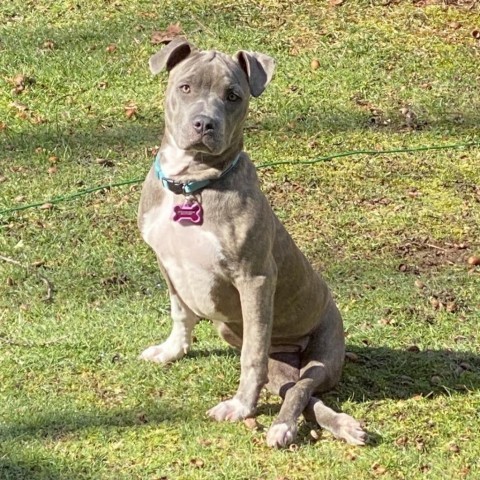
- Mixed Breed
- Vaccinations up to date
This sweet baby was set to be euthanized due to her handicap. Dolly is 6 months old, as of the... View full description »
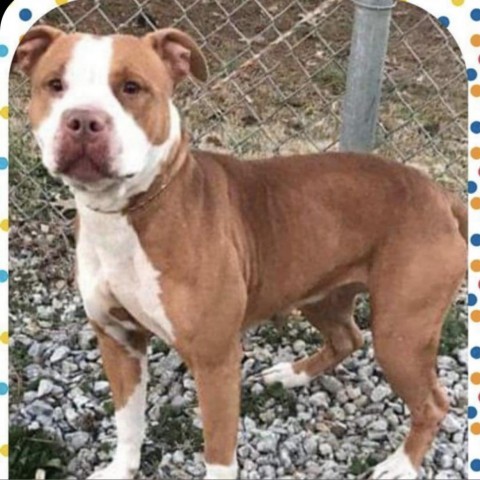
- Spayed/Neutered
This gorgeous beauty is Tamera. She is estimated to be around 4 years old and has just taken her freedom... View full description »

This little sweet potato is SPUD muffin! He is 4 and is setting in after his recent Freedom Ride. Spud... View full description »

Leslie is the SWEETEST lil pittie you've ever met. She is around 5 years old and waited a long time... View full description »
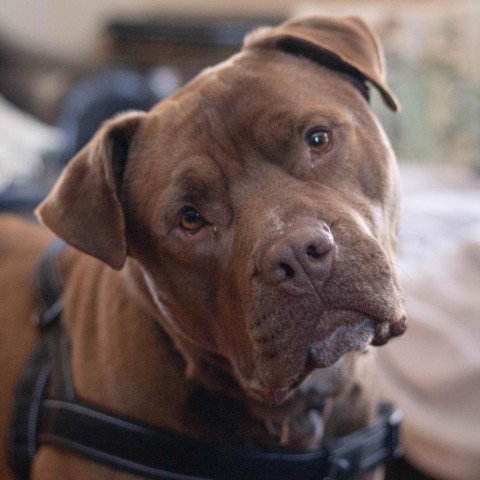
This big hunk is Clyde! Clyde is estimated to be 2 years old but has the heart of a puppy!... View full description »
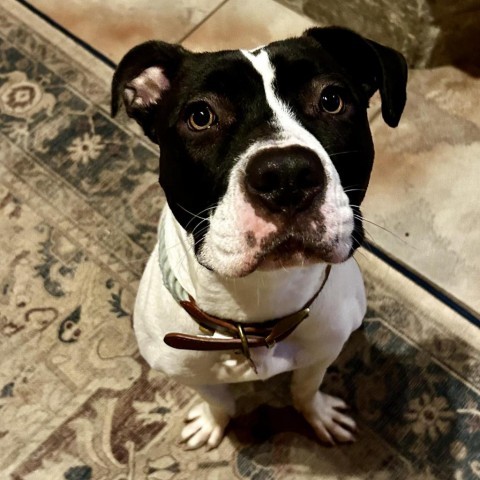
Just look at that face! Bunny is estimated to be around 3 years old and is loved by everyone she... View full description »

Here's Miss Bonnie. This 4 year old sweet girlie is so happy to be here in Maine that she can't... View full description »

- English Bulldog
Here's Lana!! This sweet, smart, affectionate, playful lady is 4 years old. She likes to be with her people and... View full description »
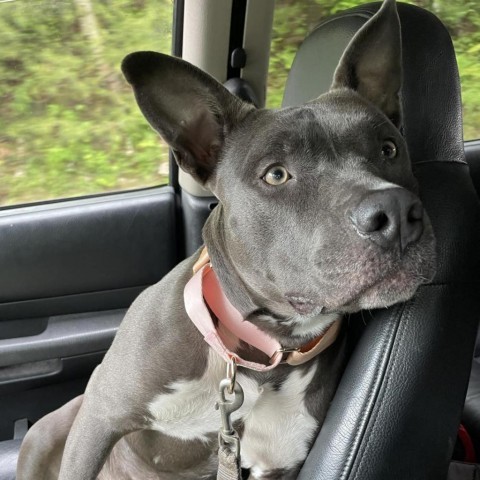
- Pit Bull Terrier
Here is Ms. Rey! Rey is 3 years old and has the best ears around and knows how to use... View full description »

Hello, I'm Halo! I'm 2 and full of spirit. I'm sweet, friendly, and I love to explore. I'm a little... View full description »

Re-introducing sweet Inu! Inu is 4 years young and is coming back to us after her previous adopter was unable... View full description »
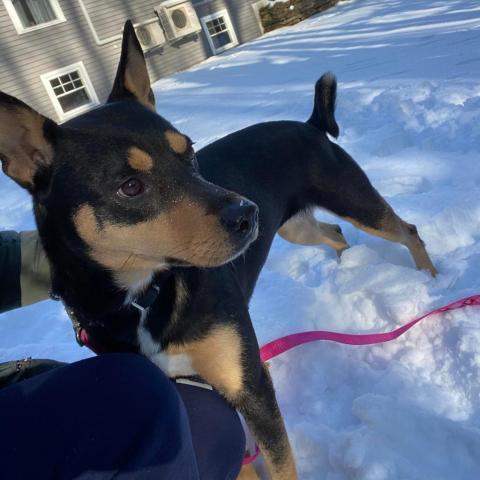
- Cattle Dog, Pit Bull Terrier, Mixed
Meet Rory! Rory is a little couch potato who is 4 years old and only 44lbs! Rory is the perfect... View full description »
Follow us on Facebook for the latest!

Rescue Updates, Foster Needs, New Adoptions & More
DoN't Miss A Thing — Join Our Newsletter Now!

HOME | ABOUT | ADOPTIONS | RESCUE UPDATES | HOW TO HELP | CONTACT
Pittie Posse Rescue & Sanctuary is a registered 501(c)3 non-profit. Contributions are tax-deductible. State of Maine Shelter license # F1607 | State of Maine Import Permit # 2017-0006
Subscribe To Our Newsletter
Join our mailing list to receive our free pet care safety guide, regular rescue updates, swag shop new releases and so much more, thank you be sure to add [email protected] to your contacts..
We respect your privacy.
Disrupting the unfair
Connecting you with dogs who need you the most. with furdoption, love is just a click away.

Virtual Adoption
Love dogs but not prepared to bring one home yet? When you adopt with us virtually, you get exclusive access to be a part of a rescued dog's life. We at Furdoption go above and beyond to ensure that the virtual adoption doesn't feel "virtual". From your dog's meals, naps, vet visits, to his or her latest shenanigans, we update you with everything. Apart from the updates, you also get to schedule online or in-person meetings with your dog.

Fostering a rescue? This is just the right place for you. We help you connect with families who could potentially be a home to this little ball of love. From beginning, until the dog is adopted, we'll be together in this.

Gift and Share
"Happiness is sweetest when shared."
- Suzanne Selfors And even sweeter when what you're sharing is a rescued furry life with someone you care about. That's why we've created for you the most seamless gifting experience.<br>Pick the fur babies you connect with the most, enter recipient's details, date of delivery, and you're done! We create a fully functional Furdoption account for the recipient, giving him or her complete access to the best gift ever!

Bring a dog home
We know how excited you are about welcoming a fur baby to your family. Unfortunately, unorganized and irrationally random adoptions tend to be problematic for both you and the dog. We at Furdoption have taken the pain out of the process. Sit back and relax while we bring home for you a sacred bundle of joy and unconditional love.

Skip to main content
How to Prepare for an Adoption Home Visit
7 tips for acing your inspection and bringing your new pup home.

share article

Your pet wants you to read our newsletter. (Then give them a treat.)
Sign up for product updates, offers, and learn more about The Wildest, and other Mars Petcare brands . Must be over 16 years to sign up. See our privacy statement to find out how we collect and use your data, to contact us with privacy questions or to exercise your personal data rights.
So you’ve found a pet to bring into your family and filled out the adoption application opens in a new tab . Many people don’t realize that when adopting from a rescue or shelter, there is often another step before you bring your pup home: The dog adoption home visit, where a representative from the rescue or shelter visits your house or apartment. Learn all about how to prepare for this step in the adoption process and what to expect from a home visit.
What is a home visit for adopting a dog?
You may be wondering why this step is necessary after you’ve already filled out an application. Shelters and rescues want to find the right home for each animal and ensure you will be a good pet parent. A home visit is their opportunity to make sure your home is suitable for a pet and remind you of the commitment and responsibility you’re accepting. In most cases, a home visit for dog adoption is just confirmation that your new pet will be safe, loved, and cared for as a member of your family.
Why do shelters do home visits?
Rescues and shelters often schedule a home visit to help them determine if your living environment and lifestyle are ideal fits opens in a new tab for the particular dog you want to adopt. It’s important that new pet parents have the time, resources, and knowledge to provide for their pet’s needs, and a home visit allows the shelter to make sure that the dog will have the loving home they deserve.
Why is preparing for an adoption home visit important?
Your adoption home visit is your opportunity to demonstrate that you can properly care for a rescue pet. Think of the apartment pet interview like a job interview — if you don’t prepare ahead of time, you likely won’t put your best foot forward.
Preparing for an Adoption Home Visit
Everyone in your household, whether other family members or roommates, should be involved in preparing for a home visit and new pet. You should talk to children about how to help take care of the dog and how to behave kindly toward animals.
To make a good impression on the adoption agency representative, you should also come prepared with your own questions to ask to show how invested you are in the process and how much thought you’ve given to taking care of a pet.
What should I do to prepare my home?
You want to show the shelter representative that you understand the responsibility of caring for a pet and will provide your new family member with everything they need to be happy and healthy. Take time to learn how to prepare for a dog and purchase all the required supplies opens in a new tab , like a crate, water and food bowls, a collar and leash, and plenty of fun toys.
What questions will a shelter ask me during adoption?
When asked, “Why do you want to adopt a dog?” answer truthfully and openly. A home visit is often more of a conversation than a formal interview, and while your answers may not determine the shelter’s final decision, the shelter representative will still ask you multiple questions to gauge your ability to care for a dog. Be prepared for the following dog adoption interview questions and answers:
Have you had experience with this particular type of animal before?
Does everyone in your household agree to get a new pet?
Do you have children? Are they comfortable and responsible with pets?
Do you currently have any pets? Are they compatible with other animals?
Do you rent or are you a homeowner?
Do you have a yard? Is it fenced in? If not, how do you plan to provide exercise, and how often?
Where will your pet be kept during the daytime? And at night?
How do you plan to care for your pet if you need to leave town?
No matter how much you prepare, you may receive some questions during the home visit that you aren’t sure how to answer. Give an honest response, and if you don’t know the answer, admit it. The shelter representative won’t expect you to know everything, and it’s better to admit your lack of knowledge than to make up an answer.
What can I do after the home visit to further support the adoption process?
An adoption home visit is also a chance for you to ask questions of the shelter representative about your potential new pet’s history and temperament. Below are some common questions to ask when getting a dog that can help you prepare for your newest family member:
What is the dog’s history?
Are there any health issues or concerns that I should be aware of?
Do you know what breed(s) the dog is?
What have you noticed about the dog’s personality?
Is the dog house-trained? Do they already know any basic commands?
Does the dog get along with children? With dogs? Other animals?
Knowing the questions to ask before adopting a dog shows that you are engaged in the adoption process and lets the shelter know that you care about providing a proper home for the dog as much as they do.
What are some common mistakes to avoid during an adoption home visit?
Like any other kind of interview, one of the worst things you can do during an adoption home visit is to give the shelter representative the answers you think they want to hear. Be honest and open with your answers — and with your home. That means giving the representative a full tour of the house, including where your pet will eat and sleep. You should also already have supplies for your dog before the home visit to show your preparedness and commitment.
What to Expect During a Home Visit
Your adoption home visit is a chance to show that you can and will provide your new pet with a safe and loving home. We asked Melissa Giordano, Adoption Coordinator of the Sato Project opens in a new tab , to fill us in on what to expect during this step of the adoption process, so you can better prepare to make the best possible impression.
1. It’s all about state of mind
Giordano emphasizes that shelters and rescues are looking for people who want to do best by their animals.
“We’re not looking for you to have a spotless home with perfect everything because that doesn’t exist,” Giordano says. “We just want to make sure that the dog is going to be safe and that the people are open to suggestions and are going to be thinking through things that could potentially cause a problem.”
So the first thing you can do is take a deep breath and frame the visit in your mind as a chance to have a better and safer environment for a pet opens in a new tab .
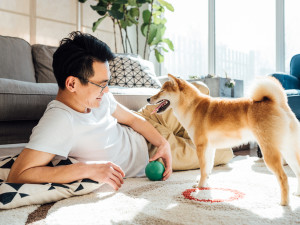
How to Puppy Proof Your Home opens in a new tab
Is your home a danger zone for a new dog? Follow these pro tips.
2. Think like a nervous dog
Giordano emphasized that a major part of her organization’s work is making sure there are no easy ways for a pet to escape their adopter’s home because animals may try and make a break for it if they’re in a new space and spooked. That means making sure that all windows and doors close securely and that you’re not relying on a screen for preventing escape; that any air conditioning units are properly anchored and the soft closures around them held firmly in place; that fences and gates (if present) are fully secure; and that there are no easily accessible tables or chairs for them to get high enough to jump over.
Your space doesn’t need to be spotless, but you need to do a decent clean-up. You want the shelter to know that you’re capable of keeping your home clean and that there’s not anything dangerous for the dog to easily get into. That means securing any garbage containers so they’re not easy to knock over and rifle through; making sure any plants you have around are pet-safe opens in a new tab ; and, if you have cat litter, making sure the dog can’t get into it. Giordano points out that things you might not even think of could be a problem: “Kids’ toys — sometimes you don’t even think about it, but puppies will chew those apart and could potentially get injured or swallow something that could get stuck.”
4. But don’t be too precious with your belongings
Animals, unfortunately, can be destructive — even if they don’t mean to be. A newly introduced dog may make messes regardless of how house-trained they are opens in a new tab as they struggle to get used to a new place. And they may chew or scratch opens in a new tab if they’re particularly nervous. So go into the adoption process with the knowledge that there might be some damage around your home, and if you have any rugs, furniture, or extremely precious belongings that you can’t stand to see possibly hurt, put them away until the animal is totally settled and you know how they’ll behave.


10 Questions to Ask a Shelter About an Adoptable Dog opens in a new tab
From exercise needs to medical history to compatibility with kids, here is everything you need to know.
5. Introductions, please
The agency will also want to meet whoever currently lives in your house — people and animals. Not every animal is suited to every living situation, so this helps them ensure that the pet is going into an environment where they will be comfortable. They’ll probably want an introduction to your family members, roommates, and any other animals onsite opens in a new tab .
6. Be prepared for in-person or over video
In large part because of the pandemic, you may be asked to do a video home visit rather than one in person. This entails dialing into a video chat where a staff member can talk to you as you walk around the house and reveal anything they need a closer look at. Or they might just want you to video a home tour on your own and send it in, which can be easier to coordinate with everyone’s schedules.
7. Be open to change
Above all else, remember that this isn’t an adversarial visit. The shelter wants you and the animal to be the best possible match so that everyone can be happy and fulfilled with one another. Any suggestions they give are so that an animal you adopt will be safer and happier — so go into the process with an open mind and a willingness to adapt, and you’ll be fine.
“The people that are coming to do the home visits are not going to judge them,” Giordano says. “We are not looking for a perfect house. We are just getting a sense for the person or the family to make sure that it’s a match for our dog and that they’re able to give our dog the best, safest, and most loving home.”
What are the reasons for denying pet adoption?
Not every pet adoption application is accepted, and shelters have a number of reasons for denying an adopter. For example, if you work long hours, the shelter may be worried that the dog will spend too much time alone and won’t get the love and care they need.
Some other reasons for denying pet adoption include:
Your home doesn’t have a fenced yard or is too small for the dog
You already own several pets
You are too young (in college or younger) and may not have time to commit to a pet
You are too old and may not be able to properly care for a pet
You have young children in the home
Your current pets are not up-to-date on vaccinations and care
None of your current pets are spayed or neutered
Remember that every pet and every situation is different. The shelter just wants to find the best possible home for each dog in their care, and reasons for denying an adoption are in the pet’s best interests.
FAQs (People Also Ask)
Preparing for your home visit shows that you are ready for the commitment of caring for a pet.
Prepare your home by purchasing the supplies opens in a new tab you need to make your home safe and comfortable for your dog. Get rid of anything opens in a new tab that could be dangerous opens in a new tab to a pet.
How can I make a good impression on the adoption agency representative?
Be enthusiastic about the process, answer questions honestly and openly, and ask your own questions.
Should I involve my family members in the preparation process?
Family members should be involved because everyone in the household should be on the same page when bringing a pet into the home and should know what to expect.
Avoid giving answers you think the representative wants to hear. Instead, give accurate and honest answers.
How can I handle any unexpected questions or situations during the visit?
If you don’t have an answer to a question or are unsure, admit it. The representative will appreciate your honesty.
After your home visit, continue to prepare your home for a new dog by purchasing supplies and asking the shelter questions about your new pet.
There are multiple reasons for denying pet adoption, including a lack of space, too many current pets, young children, and pets that are not spayed or neutered.
References:
How to Adopt a Dog opens in a new tab
Muttville – How to Adopt a Dog opens in a new tab
Korean K9 Rescue – Adoption Process opens in a new tab
Rescue Dogs Rock NYC – Application Process opens in a new tab
Sample Interview Question for Screening opens in a new tab
Guidelines for Screening Potential Adopters opens in a new tab
Home Visit Check List opens in a new tab
- dog opens in a new tab
- dog adoption opens in a new tab
- new dog opens in a new tab
- cat adoption opens in a new tab
- cat opens in a new tab
- cat safety opens in a new tab
- dog safety opens in a new tab
- new cat opens in a new tab
- puppy opens in a new tab
- rescue opens in a new tab

Tim Barribeau
Tim Barribeau is a freelance writer, editor, cat dad, and “help your boyfriend buy a suit that actually fits for once” consultant. He was previously the Style and Pets editor at Wirecutter , and has bylines at a bunch of publications that don't exist anymore (and a couple that still do).
Related articles

Get the Inside Scoop on Adoption Applications
Ready to take the plunge? Here’s everything you need to know about applying to adopt a pet.
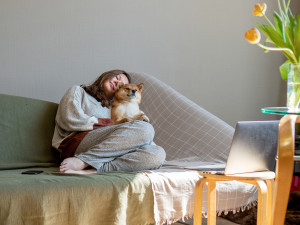
Money Talks: The Dollars of Dog Parenthood
We crunched some numbers and yup, they’re worth every penny.
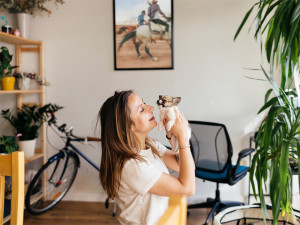
9 Unexpected To-Dos for New Pet Parents
Sound advice from seasoned dog and cat parents who have been there.

10 Things to Consider Before Adopting a Pet
It’s a big decision, so check these boxes before you sign on the dotted line.
Virtual pet meet-and-greets open doors to new families

Adoption from most animal welfare organizations, including Best Friends Animal Sanctuary, looks different these days. It just wouldn’t do to have pet adoptions come to a grinding halt, so everyone has adapted by using creative options such as virtual meet-and-greets and curbside pickup to help pets go home.
Virtual pet adoption process
Lynn Battista, adoption and transfer manager for Best Friends, says the virtual meet-and-greets at the Sanctuary are a happy surprise resulting from the not-so-happy challenge of a global pandemic.
With virtual meet-and-greets, staff members go into the animals’ living spaces and show them to potential adopters via video chat. The pets are somewhere they feel comfortable with someone they already know, and therefore they are more likely to show their true personalities. Staffers are able to move easily from place to place to show a number of pets.
If the family decides not to adopt, well, they haven’t left their house. But so far, that hasn’t happened because the success rate for virtual adoption is 100%. And there are even more daily adoptions than before.
“Virtual meet-and-greets have been especially successful in helping us find homes for some of our longer-term, medical or behavioral special needs Sanctuary animals,” says Lynn.
It’s especially helpful to shy animals needing a little more time to get comfortable with new people. They don’t have the pressure of a bunch of new faces all trying to get a look at them up close. And animals with medical conditions are also charming adopters and going home at a higher rate than usual.
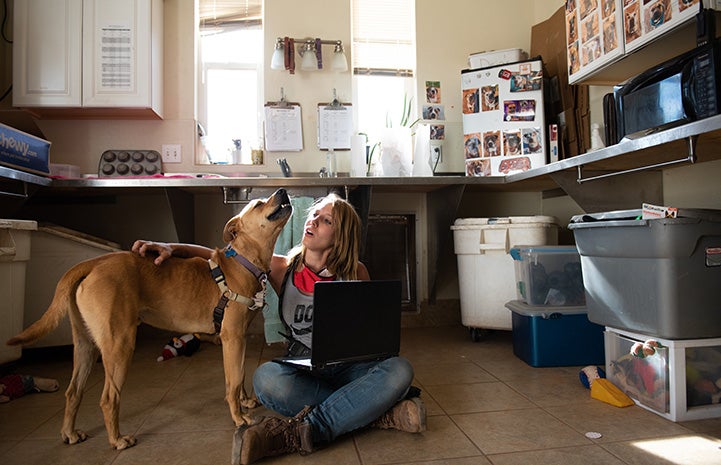
Scooby goes home
One dog benefitting from the virtual meet-and-greet setup is Scooby, a cheerful, gentlemanly dog who forms strong bonds with the people he’s comfortable with. Scooby might have been nervous going to a new place to meet a potential adopter, but instead he was able to hang out with caregiver Alaina in a space he was used to, where he could show off his real colors. While Scooby was resting on the cool floor, Alaina explained his personality and energy level ― plus how much food he likes to eat after running around all day.
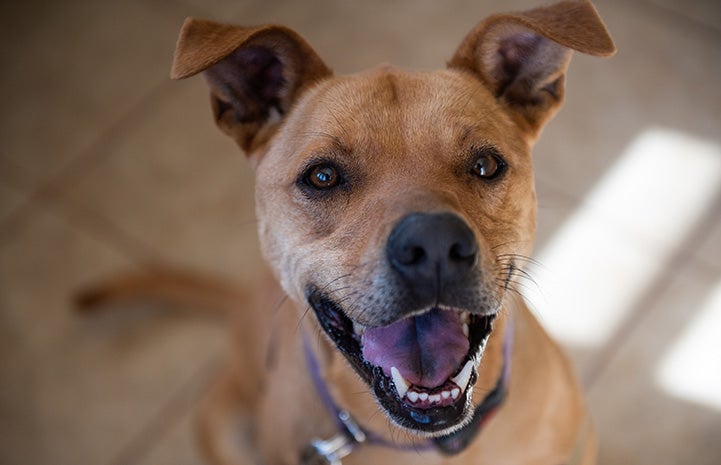
With potential adopters and an adoption specialist on the video chat, Scooby stuck his face into the camera and enjoyed the one-on-one attention as his family-to-be fell in love with him. Soon, they were driving down from Salt Lake City to pick up their new family member.
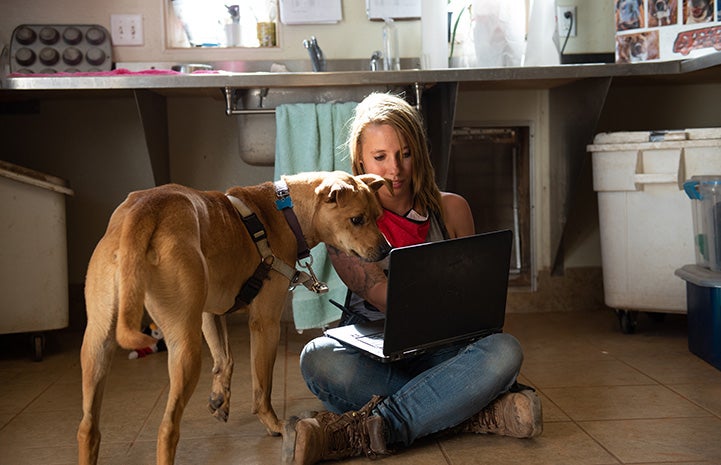
Boone the cat gets his chance to shine
Another lucky pet was Boone the cat, who also found his perfect family through virtual adoption. A gorgeous, lovable tabby, Boone has allergies that for a time required him to wear a cone or he would scratch himself until he was bleeding. He is on medicine and needs a special diet. The family wasn’t looking for a cat with special needs, but he was on their list of potential adoptees.
After virtual meet-and-greets with several others, it came down to a choice between Boone and another cat, but they fell in love with Boone’s affectionate nature and striking good looks. The family was already planning on providing a homemade raw diet for their new family member. For a cat with allergies, it was the ideal setup. Boone went home to live in the lap of luxury.
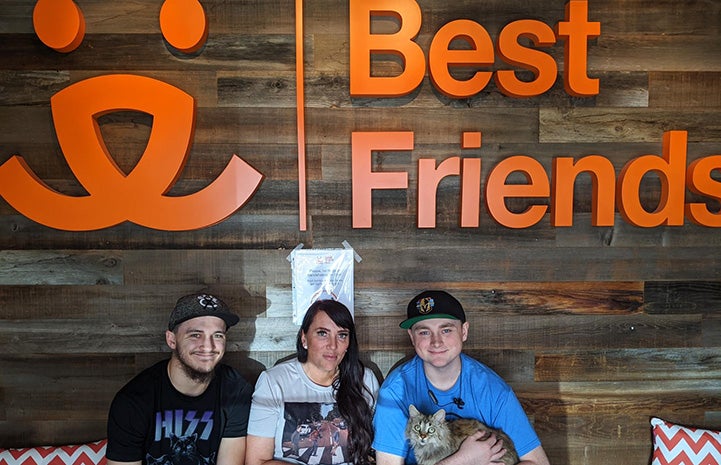
A glimpse of the future
While virtual adoptions from the Sanctuary are limited to families who can drive here to pick up their new pet, the future may hold more possibilities for options such as the virtual meet-and-greet. Just implemented in the past few weeks, it’s already doing wonders.
“The overwhelming response from the public opening their homes to foster and adoption of animals is truly a silver lining in this crisis,” says Lynn.
Bringing families together and getting more animals adopted is what it’s all about. “Normal” may be on hold and a lot of changes are taking place, but on the other side, in some ways we’re getting stronger and better than ever.
Virtual or otherwise, find an adoptable pet near you
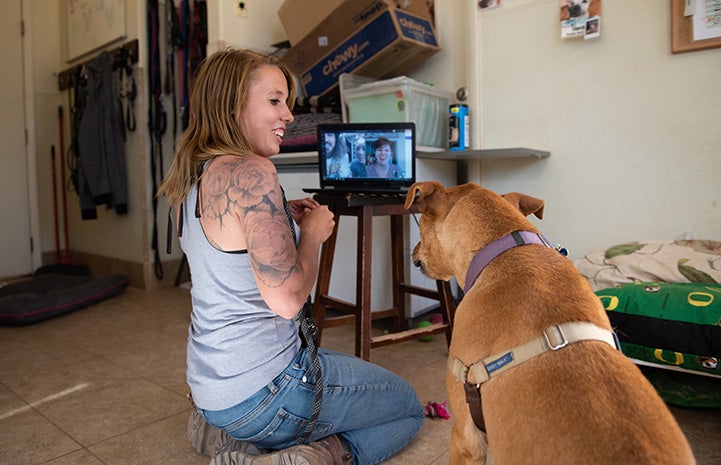
Photos by Molly Wald and courtesy of Ali Sigrist

They Rescue Us, Inc.
Adoption Application
The TRU Rescue Adoption Application is our way of getting to know you. The application asks questions about your home, family, and lifestyle so we can match you with a dog who will thrive in your care.
Please gather the following information before you begin:
- Name, contact number, and email of three personal references. Note that references must be someone other than family members, including parents, grandparents, children, siblings, in-laws, roommates, or partners.
- Name, address, and contact number of your current veterinarian, if applicable.
Adopting a rescue dog is a serious commitment, and we take the job of matching a TRU dog with an adopter equally seriously. Processing time is dependent on the availability of TRU Rescue volunteers, the completeness of your application, and the availability of your references.
Applications are processed in the order received, and it is possible the dog you are interested in will be adopted by the time your application is processed.
We primarily adopt dogs to applicants who live in Maryland, Virginia, and Pennsylvania. Sometimes we are asked whether we adopt dogs outside this area. We occasionally adopt dogs to applicants outside of our immediate area in some exceptional circumstances for some special dogs . As with most rescues, we are heavily dependent on our network of support professionals. We work closely with these individuals (veterinarians, behaviorists, trainers, groomers, kennels, etc.) to ensure our dogs end up in the right home. Our goal is to find great homes AND to support those great homes. We cannot offer a high level of support to folks who live very far away from us. If you decide to apply and live outside our normal service area, understand that chances are, we may not be able to place an animal with you.
Our approval process includes the following:
- You must be 21 years of age to apply for an adoption
- We conduct a background check
- We explore available social media
- We call all references listed on the application
- We call an applicant’s landlord when necessary
- We check with an applicant’s veterinarian, if applicable
- We assess an applicant’s lifestyle to be sure it matches a dog’s need for exercise and mental stimulation
- We conduct a virtual house visit
Submit Adoption Application
Submit Adoption Application here.
It is unnecessary to submit a new application for each dog you are interested in adopting. If you answer “Yes” to the application question of whether or not you would consider other dogs if the one you have applied for has already been placed in a home, you are automatically considered for other dogs. All applications stay on file with TRU Rescue for six months. TRU Rescue will send an email acknowledging receipt of your application to the email address you provide on the application. If you don’t see the email, please be sure to check your SPAM folder.
After you submit an application, here is what happens.
- Application Review TRU Rescue will review each application to identify those applicants who present the BEST option for the dog being considered. Yes, this is a subjective process. If your application is selected, a TRU Rescue Adoption Coordinator will be in touch with you and your references.
- Home Visit TRU Rescue will schedule a virtual home visit. The home visit will be conducted using FaceTime or a similar video and audio chatting application.
- Meet a TRU Rescue Dog TRU Rescue will schedule a Meet and Greet session with the dog you would like to adopt. We want to make sure that each applicant and dog are a great match. Our dogs are not housed in a central kennel. All our dogs are cared for in foster homes until the appropriate adopter is found.
- Adoption Contract When the adoption is fully approved, the adopter will complete the Adoption Contract. This is in addition to the Adoption Application.
- Dogs less than 12 months old – $400
- Dogs more than 12 months old – $375
- Home Prep Prepare your home and obtain supplies for the arrival of your new dog. Please check out the links under the New Owner tab.
- TRU Rescue Check-In Soon after you adopt, a TRU Rescue volunteer will be in touch with you to see how you and your new dog are adjusting and to answer any questions.
Thank you for considering adopting with TRU RESCUE and for helping to save a dog’s life.
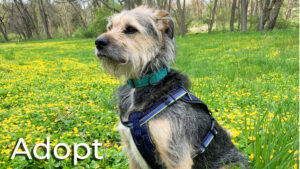
Please follow us on social media.
Copyright © 2024 · All Rights Reserved · TRU Rescue
· RSS Feed · Log in

Adoption Process
Application You apply to adopt a dog by completing the application online. The Adoption Team reviews your application and determines if you are a good match for the dog.
Selection Your application is selected as a match and you are notified by the Adoption Team. You will be asked to complete some follow up questions and then you will be put in contact with the foster for a discussion about the dog. If the discussion goes well and the applicant and foster feels comfortable with the match a meet and greet will be scheduled. Your whole family, human and canine members alike, should be present at the meet and greet.
Reference Checks and Virtual Home Visit If the foster dog, foster family, and your family are pleased with the match after the meet and greet and you wish to proceed with the adoption, the Adoption Team will contact references and arrange for a virtual home visit of your home. Please inform your vet that a volunteer from the rescue will be calling to speak with them. Our virtual home visits take place via Facebook Messenger using the video call feature. Please provide information regarding your Facebook profile name and picture so we can easily connect for the home visit.
You’re Approved! A member of the Adoption Team will schedule a telephone interview with you to discuss the rescue dog, what to expect in the transition period, and any relevant information pertaining to the dog’s medical history and ongoing care.
Contract and E-transfer The Adoption Team will also prepare and email the adoption agreement. You are expected to review, sign, and return the agreement within 24 hours and send the adoption fee via e-transfer. If you are adopting a puppy who is yet to be sterilized or an adult dog who has an outstanding medical procedure you will also receive an addendum. This document outlines the medical procedure that is to be done and when it is scheduled. You are encouraged to keep a copy of the Adoption Agreement and reach out to It Takes A Village if you have any questions going forward. Coming Home The Adoption Team will verify that the signed agreement and fee has been received and will inform the foster family that the adoption is finalized. At that point you are ready to make arrangements with the foster family for your new family member to come home!
Post Adoption The dog’s medical records and papers (if available) will be provided shortly after the time of adoption via email. We will also release the medical record at the vet clinic so you can have it transferred to your vet clinic of choice. New adopters must have their dog examined by their vet within two weeks of adoption. In the event of a pre-existing condition, It Takes A Village will cover medical treatment with our vet up to a certain amount. Any issues not detected in the first two weeks are deemed to be new and It Takes A Village holds no liability. A member of our team will contact you periodically throughout the first year of adoption to check on your family
Ready to adopt a dog?
We need your help to rescue more dogs and find them forever homes.

- Dogs to Adopt
- Join The Pack
- Dog Adoption Form
- Dog Foster Form
- Cat Adoption Form
- Cat Foster Form
- Volunteer Form
- FAQ and Contact Info
- Nick Bibby Fund
- Dog Training
A 501(c)(3) Non-Profit • Dog Rescue
The Little Red Dog • We rescue dogs and find them forever homes
Join our team, find your next pal today, pup of the month.
This beautiful girl is 4 years old and weighs 32lbs. She is an athletic girl who excels at agility and nose work. She can be a little shy when you first meet her however, once she knows you, she will love you! Sombra also gets along great with other dogs and enjoys the company of children. Fit, friendly and ready to join your family. Apply to adopt Sombra today!
Help Us Save Lives
Your support can make a difference in the lives of animals in need. From monetary donations to volunteering your time, there are many ways to help us continue our mission. Join us in making a difference in the lives of animals today.
Want to Support The Little Red Dog?
We rescue dogs from high kill shelters across Southern California, rehab them through dog behavior and find them forever homes. To see all of our dogs that are up for adoption, click here . Once you see a dog you are interested in, you can proceed to the adoption form.
In order to save a dog that is about to be euthanized, we need a foster. When you allow a foster to become part of the family, you are training that pup that humans can be trusted. You are in essence, saving their life.
We can not save dogs without loyal volunteers. The Little Red Dog needs help with events, fundraising and walking pups. You do not need to be 18 to volunteer. Start helping today.
It costs our organization almost $700 to rescue a dog that is about to be euthanized. Your donation goes directly to saving or supporting a dog in our program.
TRAINING & BEHAVIOR
We don't just talk the talk, we walk the walk. Our approach to dog training is to make you understand how to communicate to your pup in order for you to become a strong leader.
On A Mission From Dog
A little bit about who we are and what we stand for.
Connect With Us
Copyright © 2024 The Little Red Dog - All Rights Reserved.
Powered by GoDaddy Website Builder
Cookie Policy
This website uses cookies. By continuing to use this site, you accept our use of cookies.

We Need Your Help
HELP A PUP IN NEED
You are using an outdated browser. Please upgrade your browser to improve your experience.
How to Host A Virtual Adoption Event

Social media is a powerful tool in getting animals adopted, especially when it comes to dogs, cats, and horses who don’t show well at the shelter or are in foster homes. Virtual adoption events, where your organization showcases a number of adoptable animals in succession on your social media pages, are a great and easy way to engage your community and find adopters. Follow these steps to host your own virtual adoption event:
- Take a look at your population and decide which animals may benefit most from being featured in this virtual event. Which dogs cats, or horses don’t show well in the shelter setting or could use an extra push?
- After you’ve selected your featured animals, source lots of enticing content from your staff or foster parents. Ask them to send photos, videos, and biographies that really show off the animal’s true personality. Note that vertical photos and videos work best in a social media story format.
- Choose your platform and get posting! Facebook and Instagram stories work well for this type of quick, compelling content. Make sure your first story notes that this is a virtual adoption event, then move into showcasing your animals. Add captions over the photos and videos that include the animal’s name, likes and dislikes, and what type of home would be a good fit for them. Your final slide should have a link to where potential adopters can go to learn more about these pets. If you can include a swipe-up link, use that tool. If not, post the URL and consider making it the temporary link in your social media bio.
- Before your virtual adoption event, cross-promote it across all your other marketing channels, including email, website, and static social media posts.
Curious what a virtual adoption event looks like when it’s all said and done? Check out this recent example from the ASPCA’s Los Angeles Kitten Foster Program .
If you’re considering hosting a virtual adoption event through a video conferencing platform instead of sourcing materials from your foster caregivers, take a look at these examples from Angels Among Us Pet Rescue and Nashville Humane Association .
And review this Virtual Adoption Event Guide from Pedigree .
We have lots more on this subject:
- Adoption Ambassadors Resource Hub
- Virtual Adoption Resources
Featured Tools & Tips
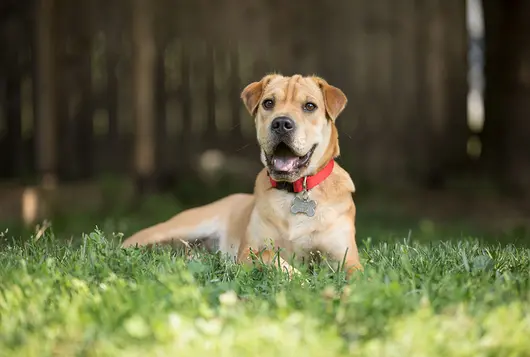
How to Facilitate Dog Adoptions Directly from Foster to Adoptive Homes
Download and customize protocols to help facilitate dog adoptions directly from foster to adoptive homes.
Explore ASPCApro Tools & Tips by Topic:
- Shelter Medicine
- Enrichment & Behavior
- Adoption & Placement
- Spay/Neuter
- Cruelty & Disasters
- Equine Welfare
- Keeping Pets in Homes
- Programs & Operations
Over 10,000 Dogs Adopted! DONATE NOW

- Virtual Adoptions
Home for Good Dog Rescue has been able to save over 12,000 dogs in just 14 years thanks to the financial support of our generous donors. We encourage you to explore the various ways you can invest in the work we do. As a 100% foster-based rescue, we rely on the generosity of people like you. Please consider supporting Home for Good Dog Rescue as we rescue homeless dogs from high-kill shelters in the South, socialize, care for, and provide them life-saving medical care at our property in Aiken, SC, transport them to our rescue in New Jersey, nurture them in our network of foster families and finally adopt them into loving homes – giving them a second chance at life.
Our Virtual Adoption program gives one more dog the second chance he or she deserves. What a great way to become part of their all-important journey home! We will send you or the recipient of your choice an electronic Virtual Adoption Certificate and a photo of a dog you’re helping to bring to their forever family. This is a unique opportunity to change the life of a dog in need.

- One-Time Donations
- HFGDR’s Monthly Giving Club
- Paver Campaign
- Donation of Goods and Supplies
- Third-party Fundraiser
- Corporate and Foundation Partners
- Almost Home Wellness Center
- Partners Portal
- Why We’re Different
- Adoption Events
- Fundraisers
- Outreach Events
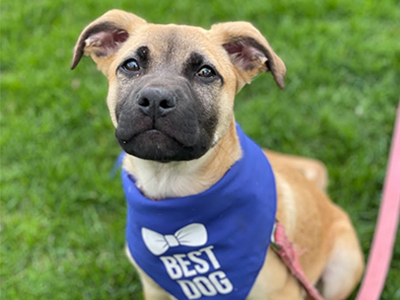
Learn More About Fostering A Dog
No thanks. Close This Pop-Up.
Humane Society Silicon Valley

How to Adopt
Adoption fees, happy tails.
- Hours & Locations
- Pocket Pets
- Garden Cats
- Diamond in the Ruff
- Will & Trust Gifts
- Legacy & Endowment
- Endowment Donors
- Bequest Donors
- Membership Benefits
- 1929 Legacy Society
- Faithful Friends
- Pet Guardianship
- Monthly Giving
- Vehicle Donation
- Stocks, IRAs, Charitable Funds
- Workplace Giving
- Honor & Memorial Gifts
- Tribute Bricks
- Sponsor an Animal’s Care
- Event Sponsorships
- Volunteer Roles & FAQs
- Student Opportunities
- Doggy Day Out
- Foster Cats or Kittens
- Foster Dogs or Puppies
- Pet Surrender
- Pet Care & Medical Resources
- Lost & Found
- Community Cat Spay & Neuter Program
- Large Dog Spay/Neuter Program
- Vaccine & Microchip Clinics
- Animal Loss Support Group
- Mission Impact & Financials
- Leadership Team
- Board of Directors
- Career Opportunities
- Saving Lives
- Keeping Families Together
- Changing the Game
- Mutual Rescue
Available Animals
- Hours and Locations
Visit our Neighborhood Adoption Center
Petco West San Jose Neighborhood Adoption Center is now open 4 days a week! Visit us at 500 El Paseo de Saratoga, San Jose Thursday-Saturday 11 a.m. – 5 p.m. and Sunday 12 p.m. – 5 p.m. to meet adoptable cuties.
Walk-in adoptions are open at our Peter Detkin and Michelle Oates Detkin Animal Community Center and Petco West San Jose Neighborhood Adoption Center (NAC) .
**Update** From Monday, April 22, to Thursday, April 25, the Detkin/Oates Center’s parking lot will be under construction. Parking will be limited to the South Wing lot and street parking.
Detkin/Oates Center
- Monday-Wednesday 11 a.m. – 5 p.m.
- Thursday 12 p.m. – 7 p.m.
- Friday 11 p.m. – 5 p.m.
- Saturday-Sunday 10 a.m. – 5 p.m.
Follow these easy steps to bring home your new friend:
1. Check out our available animals . If the animal you are interested in is in a foster home, fill out the appointment request form in the animal’s online profile.
2. Visit during adoption hours. When you arrive at our ACC, check in by scanning the QR code. If you’re meeting dogs/puppies, you’ll receive a text when an adoption counselor is available to introduce you to our available animals. If you’re meeting cats/kittens, you are able to introduce yourself to available animals and let our staff know when you’re ready to adopt. Adoptions are first-come first-serve, so if you are interested in adopting one specific animal, please let our staff know right away!
3. Let’s go home, buddy! If you’re ready to adopt, an adoption counselor will help you set up your new pet for success and complete all paperwork and payment. Your new pet will be ready to go home the same day! Please note that all dogs/puppies must leave on a leash and collar and cats/kittens must leave in a carrier. These items may be purchased during your visit if you do not already have them.
For visitors with food allergies: Please be aware that some of the dog treats used may contain or come into contact with peanuts. Be sure to notify staff and volunteers when you visit!
Petco West San Jose NAC
- Thursday – Saturday 11 a.m. – 5 p.m.
- Sunday 12 p.m. – 5 p.m.
1. Check out our available animals .
2. Check in with an adoption counselor to get on a waitlist to meet animals.
3. Let’s go home, buddy! If you’re ready to adopt, an adoption counselor will help you set up your new pet for success and complete all paperwork and payment. Your new pet will be ready to go home the same day! Please note that all cats/kittens must leave in a carrier.
Rabbits and Pocket Pets
1. View available rabbits or pocket pets and click on the animal you are interested in meeting.
2. Sign up for an appointment if needed via the link in the animal’s profile.
Rabbit sign-up
Pocket pet sign-up
Ongoing Special Adoption Fees
- Mommy & Me Pricing
- 60+ Discount (For Seniors & Canines)
- Veterans Discount
When you adopt a mother cat, you can also take home one of her kittens at no additional cost. Mom and baby will keep each other company, and mom will continue to mentor her kitten in all ways cat.
At HSSV, we believe that more mature pets make wonderful pets. Adopters age 60+ can receive half priced adoption fees when adopting cats and dogs 6 years or more or rabbits 4 years or older.
In honor of vets and their pets, HSSV will waive the adoption fee of one feline and/or canine within a 6 month period for Military personnel and veterans. Valid identification is required at the time of adoption, please contact us for details.
FeLV+ cats have an adoption fee of $10. FeLV (Feline Leukemia Virus) is a virus that targets the immune system in cats. FeLV+ cats can go on to live long, healthy lives with appropriate veterinary care and an indoor-only home.
Make an impact for an animal in need
Did you know that you can sponsor the adoption fees for a needy animal? Heather and Matt Robbins adopted Abby from HSSV, and regularly come to our Peter Detkin and Michelle Oates Detkin Animal Community Center to sponsor the care and adoptions for animals that need it most.
Benefits Of A HSSV Adoption
Starting with excellent matchmaking services from our adoption counselors, an HSSV adoption includes:
- Spay/Neuter surgery
- All necessary vaccines appropriate for the animal’s age and routine deworming
- Home Again Microchip with lifetime registration
- Expert tips on pet care and training, including free behavior advice for the lifetime of the animal from a behavior specialist
- Post Adoption advice as your new pet adjusts to the home
- All our animals have been examined by veterinary staff and received a behavior assessment. You will receive a behavioral note about their time in our care.
The Cost Comparison Of Adopted Animal Vs. A “Free Pet”
A free pet may seem like a great deal, but pet care costs add up quickly. For a better value, adopt from Humane Society Silicon Valley, where adoptions include a full array of services to keep your new companion safe and healthy.
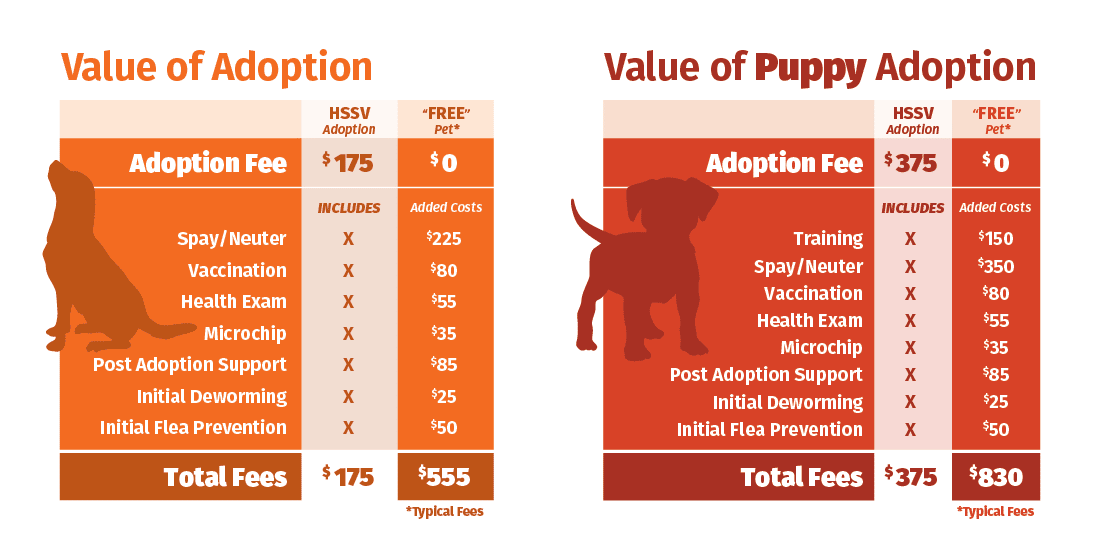
Happy Tails! Ariel’s new home life is perfection. She’s got couches to snooze on, an entire house to do zoomies in, and plenty of dog park time. Best of all, she get lots of peanut butter.

Happy Tails! Miso and Mackerel were adopted recently and are basically attached at the hip. Their new family says its been so fun watching them come out of their shells and turn into total cuddle bugs.

Happy Tails! Basil’s post adoption has been a dream come true! Lots of training, plenty of walkies and of course, endless snuggles on rainy days
Get Puppies in Your Inbox
Sign up for news, stories, and more delivered to your inbox monthly!
- About Petfinder
- Adopting Pets
- Animal Shelters & Rescues
- Petfinder Foundation
- Dog Adoption
- Feeding Your Dog
- Dog Behavior
- Dog Health & Wellness
- Dog Training
- Other Dog Information
- Cat Adoption
- Feeding Your Cat
- Cat Behavior
- Cat Health & Wellness
- Cat Training
- Other Cat Information
- Exotic Pets
- Guinea Pigs
- Small & Furry Pets
Learn more about how Purina and Petfinder are making a difference together.
- Go back to the top level navigation.
Animal Search Header
Create a profile to find your best match.
It only takes 60 seconds!
Create a profile to sort by best match
Already have a profile? Log in.

- Weather
Search location by ZIP code
How to help a furry friend find a forever home.
- Copy Link Copy {copyShortcut} to copy Link copied!

GET LOCAL BREAKING NEWS ALERTS
The latest breaking updates, delivered straight to your email inbox.
Looking for a new family member?
Shelters across the country had deals for National Adopt A Shelter Pet Day, but these furry friends can come home any day of the year.
To learn how to bring one home, visit:
- Shelby County Humane Society
- Greater Birmingham Humane Society
Stay updated on the latest stories with the WVTM 13 app. You can download it here .
Dog reunites with owner after escaping during tornado
WASHINGTON COUNTY, Neb. ( WOWT /Gray News) - Wrigley, a dog who escaped Friday during a tornado, was reunited with his owner.
Wrigley’s owner, Gina Volonec, said as a tornado approached their home, her husband rushed home to secure the family pets.
“He came home to get the animals down to the basement and he got the cats in there,” she said. “Wrigley was down there but he got spooked and ran back up the stairs before David could grab him.”
There was no time to chase Wrigley, but he ended up with a neighbor’s pet named Buddy.
Searchers found paw prints indicating both dogs spent the night along a wooded ridge about half a mile from their homes.
“They were together, and they don’t like each other,” Volonec said.
Volonec said she thought Wrigley was “gone forever.”
“Don’t you dare leave me again,” she said.
Volonec’s home was one of several destroyed after a tornado hit the area.
Copyright 2024 WOWT via Gray Media Group, Inc. All rights reserved.

FBI investigating fired employees at Habitat for Humanity of Deep East Texas

Walmart to close its 51 health centers, virtual care service

Judge holds Trump in contempt, fines him $9,000 and raises threat of jail in hush money trial

Man snags $14K Cartier earrings for $14 after website price glitch, reports say

Rescue operations underway in Tyler, Polk counties in wake of weekend flooding
Latest news.

Clashes break out during pro-Palestinian protests at UCLA after police clear Columbia University

Police clear Columbia University building held by protesters; dozens arrested

DOJ moves to loosen federal marijuana restrictions

9-year-old saves parents after tornado picks up, tosses their truck

Boy, 9, runs for help for parents injured when tornado tosses their truck

IMAGES
COMMENTS
Anything that could be potentially dangerous. Since covid, the rescue actually does 2 virtual home visits or tours. It's likely harder but having 2 separate eyes it's easier to catch something that could be missed since everything is virtual. There's also been a huge increase in adoption applications.
Published: September 2nd, 2015. Home visits are often part of the dog adoption process. And you want to be ready when they visit your home - that's why Kevin Roberts will walk you through the home visit procedure. "Hello! I am here for your home visit!". If you're adopting a dog, you might be greeted by these words from a stranger at ...
Before you adopt a pet: Talk to everyone in the household about the adoption. Ensure you can financially support your future pet and its medical bills. Research all the ways you need to care for ...
We take adoptions seriously. We carefully screen potential adopters, getting vet and landlord checks where applicable, and conducting virtual home visits to match our dogs with aligned families. Once someone adopts from us, they become a part of our community and we stay connected to support them (and gush over future photos of our happy dogs ...
Virtual adoptions are a great way for adoption agencies to continue placing dogs, cats, and horses into homes while practicing physical distancing. Whether animals are in foster homes or onsite, these resources provide tips and strategies for everything from online meet-and-greets to no-contact animal handoffs to remote post-adoption behavioral ...
6. Be prepared for in-person or over video. In large part because of the pandemic, you may be asked to do a video home visit rather than one in person. This entails dialing into a video chat where a staff member can talk to you as you walk around the house and reveal anything they need a closer look at.
Love dogs but not prepared to bring one home yet? When you adopt with us virtually, you get exclusive access to be a part of a rescued dog's life. We at Furdoption go above and beyond to ensure that the virtual adoption doesn't feel "virtual". From your dog's meals, naps, vet visits, to his or her latest shenanigans, we update you with everything.
6. Be prepared for in-person or over video. In large part because of the pandemic, you may be asked to do a video home visit rather than one in person. This entails dialing into a video chat where a staff member can talk to you as you walk around the house and reveal anything they need a closer look at.
Virtual meet-and-greets via Zoom or another video conferencing platform are a great way for potential adopters to see what a dog, cat, or horse is really like in a home environment. Make sure the foster volunteer is prepared for the call, and ask them to prioritize being open, honest, and transparent about the animal.
With virtual meet-and-greets, staff members go into the animals' living spaces and show them to potential adopters via video chat. The pets are somewhere they feel comfortable with someone they already know, and therefore they are more likely to show their true personalities. Staffers are able to move easily from place to place to show a ...
House Check basics: Review the application before the visit. Take a "dog's eye view" of the home and yard. Imagine you're placing your own dog there and look for any potential risks. Try to take the desired dog on the visit. Exercise caution if the applicants have another pet, as the animals will require a careful introduction.
TRU Rescue will review each application to identify those applicants who present the BEST option for the dog being considered. Yes, this is a subjective process. If your application is selected, a TRU Rescue Adoption Coordinator will be in touch with you and your references. TRU Rescue will schedule a virtual home visit.
Adoption Fees; Available Dogs; Volunteer. Volunteer Information; Volunteer Application. Submit Vet Records; Virtual Home Visit; Donate. Ways to Donate; Merchandise; About Us. About Us; Supporters; Photos. Before and After Photos; Happy Tails - Adopted Dogs Photos 2013-2017; Happy Tails - Adopted Dogs Photos 2018 to 2023;
If the foster dog, foster family, and your family are pleased with the match after the meet and greet and you wish to proceed with the adoption, the Adoption Team will contact references and arrange for a virtual home visit of your home. Please inform your vet that a volunteer from the rescue will be calling to speak with them.
Sombra. This beautiful girl is 4 years old and weighs 32lbs. She is an athletic girl who excels at agility and nose work. She can be a little shy when you first meet her however, once she knows you, she will love you! Sombra also gets along great with other dogs and enjoys the company of children. Fit, friendly and ready to join your family.
Pit bull & strong breed adoption criteria. Must be over 25 years of age to adopt a Pit Bull, Pit Bull mix, or strong breed dog.. Written landlord permission or a pet policy allowing the specific breed is required for adoption approval.. A virtual home visit is may be required.. Training or breed experience is required as part of the adoption.. Agree to not take the dog to dog parks or dog daycare.
Facebook and Instagram stories work well for this type of quick, compelling content. Make sure your first story notes that this is a virtual adoption event, then move into showcasing your animals. Add captions over the photos and videos that include the animal's name, likes and dislikes, and what type of home would be a good fit for them.
Virtual Adoptions. Home for Good Dog Rescue has been able to save over 12,000 dogs in just 14 years thanks to the financial support of our generous donors. We encourage you to explore the various ways you can invest in the work we do. As a 100% foster-based rescue, we rely on the generosity of people like you. Please consider supporting Home ...
Okay so I have had in person home visits and the one of the main rescues I work with is currently doing virtual visits. They mainly want to make sure you have the appropriate room for your new pup and can provide it with a safe environment.
Cat Adoption Articles. Helpful insights on what to expect. With more adoptable pets than ever, we have an urgent need for pet adopters. Search for dogs, cats, and other available pets for adoption near you.
Monday-Wednesday 11 a.m. - 5 p.m. Thursday 12 p.m. - 7 p.m. Friday 11 p.m. - 5 p.m. Saturday-Sunday 10 a.m. - 5 p.m. Follow these easy steps to bring home your new friend: 1. Check out our available animals. If the animal you are interested in is in a foster home, fill out the appointment request form in the animal's online profile. 2.
All trademarks are owned by Société des Produits Nestlé S.A., or used with permission. Search for dogs for adoption at shelters near Santa Clara, CA. Find and adopt a pet on Petfinder today.
Home Adopt Foster Donate Forever Care Rainbow Bridge Dogs 2024 back up Adopt for Life & Fulfill Every Pet's Dream ... Adopt for Life & Fulfill Every Pet's Dream. See dogs. Every Pet's Dream is a 501(c)(3) Non-Profit foster-based rescue dedicated to saving animals that otherwise would have been euthanized. We provide them a fresh start and an ...
Looking for a new family member? Shelters across the country had deals for National Adopt A Shelter Pet Day, but these furry friends are able to come home any day of the year.To learn how to bring one home, visit:Shelby County Humane SocietyGreater Birmingham Humane SocietyStay updated on the latest stories with the WVTM 13 app.
WASHINGTON COUNTY, Neb. (WOWT/Gray News) - Wrigley, a dog who escaped Friday during a tornado, was reunited with his owner.Wrigley's owner, Gina Volonec, said as a tornado approached their home ...